George Gilder
description: an American investor, writer, and economist known for his views on technology and economics
113 results
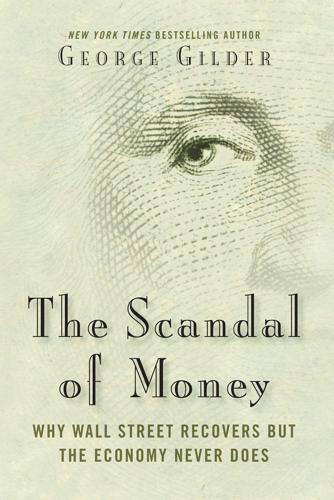
The Scandal of Money
by
George Gilder
Published 23 Feb 2016
Miles, “The Fed’s Zero Interest Rate Policies Amount to a War on Jobs,” Forbes, June 4, 2013, http://www.forbes.com/sites/realspin/2013/06/04/the-feds-zero-interest-rate-policies-amount-to-a-war-on-jobs/#2715e4857a0b72333a807421. 7.David Malpass, “Pro-Growth Tools for the Frozen Fed,” Wall Street Journal, October 6, 2015. CHAPTER 12: WALL STREET SELLS ITS SOUL 1.Mike Konczal, “The Devastating Lifelong Consequences of Student Debt,” New Republic, June 24, 2014. See also Bill Walton, On Common Ground, interview with George Gilder. 2.Peter Thiel with Blake Masters, Zero to One: Notes on Startups, or How to Build the Future (New York, NY: Crown Business, 2014), 89–90; and George Gilder, Knowledge and Power: The Information Theory of Capitalism and How It Is Revolutionizing Our World (Washington, DC: Regnery Publishing, 2013), 29–33. The figures on jobs contribution from venture capital vary from 11 percent to 17 percent, but since the epochs of slavery and socialism all jobs have stemmed from the process of knowledge accumulation and learning, which is the focus of venture investment. 3.Charles Gave, “Indexation=Parasitism,” GavekalDragonomics (Hong Kong: Gavekal Research, July 15, 2014), 1. 4.John C.
…
Copyright © 2016 by George Gilder All rights reserved. No part of this publication may be reproduced or transmitted in any form or by any means electronic or mechani-cal, including photocopy, recording, or any information storage and retrieval system now known or to be invented, without permission in writing from the publisher, except by a reviewer who wishes to quote brief passages in connection with a review written for inclu-sion in a magazine, newspaper, website, or broadcast. Regnery® is a registered trademark of Salem Communications Holding Corporation First e-book edition 2016: 978-1-62157-566-5 Originally published in hardcover, 2016 Cataloging-in-Publication data on file with the Library of Congress Published in the United States by Regnery Publishing A Division of Salem Media Group 300 New Jersey Ave NW Washington, DC 20001 www.Regnery.com Manufactured in the United States of America 10 9 8 7 6 5 4 3 2 1 Books are available in quantity for promotional or premium use.
…
See also Kyle Smith, “The Hard Untruths of Ta-Nehisi Coates: A Bestselling Polemic Riven with Hatred Thrills the Liberal Elite,” Commentary, October 2015, pp. 20–25. 6.Yuval Levin, “The Mobility Crisis,” Commentary, March 2015, pp. 12–20. 7.Kwasi Kwarteng, War and Gold: A 500-Year History of Empires, Adventures, and Debt (New York, NY: PublicAffairs, 2014), 219–20. 8.Peter Thiel with Blake Masters, Zero to One: Notes on Startups, or How to Build the Future (New York, NY: Crown Business, 2014), 5–11 and passim. CHAPTER 2: JUSTICE BEFORE GROWTH 1.George Gilder, Knowledge and Power: The Information Theory of Capitalism and How It Is Revolutionizing Our World (Washington, DC: Regnery Publishing, 2013). See also Cesar Hidalgo, Why Information Grows: The Evolution of Order from Atoms to Economics (New York, NY: Basic Books, 2015). The MIT scholar offers a similar information theory of capitalism, with many ingenious refinements, that nonetheless goes astray from my point of view by identifying information with order.
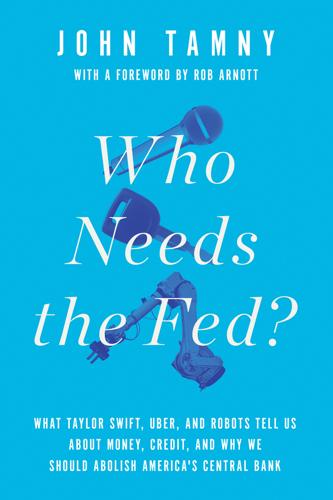
Who Needs the Fed?: What Taylor Swift, Uber, and Robots Tell Us About Money, Credit, and Why We Should Abolish America's Central Bank
by
John Tamny
Published 30 Apr 2016
While there’s nothing wrong with investing that’s focused on wealth preservation or achieving predictable returns, major entrepreneurial advances don’t often emerge from defensive investing. Big advances that truly expand the amount of economic resources in a society (as always, credit) are, as George Gilder puts it, the result of “surprise.”8 Edison’s innovations that led to the electric light bulb and a company that thrives to this day (General Electric) were the definition of surprise. Indeed, Junius Morgan, a keen allocator of capital himself, advised his son against tangling with Edison. As Thomas Kessner wrote in his 2004 book Capital City, Junius “wanted to have nothing to do with the eccentric inventor and his bulb experiments.”9 Thankfully, J.
…
Higher federal revenues represent a hideous bug in the supply-side tax-cutting argument, not a feature. It’s time to cut taxes to a rate that actually pushes revenues well below the Laffer curve. CHAPTER EIGHT Why “Senator Warren Buffett” Would Be a Credit-Destroying Investor It is the leap, not the look, that generates the crucial information. —George Gilder BACK IN THE EARLY PART of the twentieth century, when the automobile industry was in its infancy, there were more than two thousand car companies in operation. Notably, only around 1 percent of them survived.1 This statistic from over a century ago is worth bringing up, in light of what was discussed in the previous chapter—it, and the frequent, and very lazy, use of the word “bubble” by market pundits.
…
The difference is staggering, and because it is, it was only natural that all manner of unsuccessful ideas received funding in the technology space. When we consider what the Internet “bubble” wrought, including a shallow downturn as the markets were cleared of some admittedly bad ideas, the only sane response would be to wish for more of these “bubbles” every few years. Indeed, as George Gilder notes in his masterful Knowledge and Power, “Crises may be growth spasms.” Gilder’s point is that economic advancement is about the leap, and it was during the Internet boom that massive amounts of saving and investing gifted the marketplace with voluminous information; some of it good, some of it great, most of it profitless.
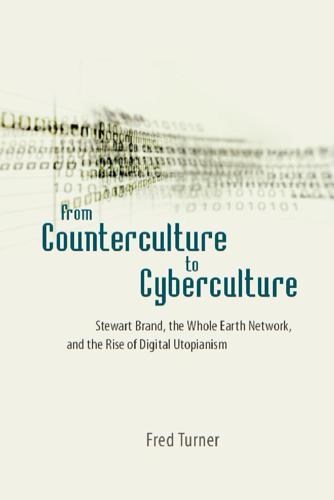
From Counterculture to Cyberculture: Stewart Brand, the Whole Earth Network, and the Rise of Digital Utopianism
by
Fred Turner
Published 31 Aug 2006
Gilder and Dyson had known each other since the early 1980s, when Gilder had briefly covered semiconductors for Dyson’s newsletter Release 1.0. For a thorough critical analysis of the “Magna Carta,” see Moore, “Cyberspace Inc. and the Robber Baron Age.” 33. Gilder, Men and Marriage, vii; Bronson, “George Gilder,” 188. 34. For an account of these conferences, see Borsook, Cyberselfish, 59 – 61, 131–33. 35. Gilder, quoted in Kelly, “George Gilder,” 39, 40. 36. Ibid., 40. 37. Wiener, Human Use of Human Beings, 96. Two years after running this piece, Kelly and Wired published a mild critique of Gilder’s views by David Kline and Daniel Burstein, entitled “Is Government Obsolete?”
…
In the pages of Wired, at least, this new elite featured the citizens of the WELL, the members of the Global Business Network, and the founders of the Electronic Frontier Foundation—all groups well woven into the fabric of the Whole Earth community—as well as Microsoft’s Bill Gates, libertarian [ 8 ] Introduction pundits such as George Gilder, and, on the cover of one issue, conservative Republican Congressman Newt Gingrich. To those who think of the 1960s primarily as a break with the decades that went before, the coming together of former counterculturalists, corporate executives, and right-wing politicians and pundits may appear impossibly contradictory.
…
The builders of computers and telecommunications networks, suggested Wired—men like John Malone of TV cable behemoth TCI, Frank Biondi and Ed Horowitz of Viacom, and Bill Gates of Microsoft—were working to construct the hightech infrastructure of a new and better world. So too were libertarian pundits and politicians. In the logic of Wired, they were simply social, as opposed to technical, engineers. Like their brethren in Silicon Valley, conservative author and media analyst George Gilder, futurist Alvin Toffler, and Republican Speaker of the House Newt Gingrich were working to bring about individual liberation and government by contract and code. Together, Wired seemed to suggest, these two communities had set about to free America and the world from the rigid, oppressive corporate and government bureaucracies of the twentieth century.

The Future of Ideas: The Fate of the Commons in a Connected World
by
Lawrence Lessig
Published 14 Jul 2001
. ; The Birthday Song Is Still Copyrighted and Nets Nearly $1 Million a Year in Royalties,” Orlando Sentinel, February 27, 2001, E1. 30 Or at least not yet. George Gilder has repeatedly argued that a future infrastructure based on fiber optics would provide “infinite bandwidth.” See George Gilder, Telecosm: How Infinite Bandwidth Will Revolutionize Our World (New York: Free Press, 2000); George Gilder, “Rulers of the Rainbow: The New Emperors of the Telecosm Will Use the Infinite Spectrum of Light—Visible and Invisible—to Beef up Bandwidth,” Forbes ASAP (October 1998): 104; and George Gilder, “Into the Fibersphere (Fiber Optics),” Forbes (December 1992): 111. 31 Ben H.
…
That is not to argue that it will do more harm than good. We don't know enough yet to know that. But it raises a fundamental issue that the scarcity mentality is likely to overlook: The best response to scarcity may not be a system of control. The best response may simply be to remove the scarcity. This is the promise that conservative commentator George Gilder reports. The future, Gilder argues, is a world with “infinite” bandwidth.71 Our picture of the Net now—of slow connections and fast machines—will soon flip. As copper is replaced with glass (as in fiber optics) and, more important, as electronic switches are replaced by optical switches, the speed of the network will approach the speed of light.
…
They resist the efforts by entrenched interests to use government-granted rights over spectrum as a way to protect their own interests. They resist, that is, both government-granted and market-regulated licenses. Thus, when the government proposed auctioning off more of the radio spectrum, conservative economist George Gilder responded not by praising markets, but by attacking the political corruption implicit in these deals. Says Gilder: Still more subversive of good policy, the very auction process entrenches obsolescent technology and promotes the false idea that spectrum is the basis of a natural monopoly.37 Gilder favors innovation and change over state-supported monopolies.
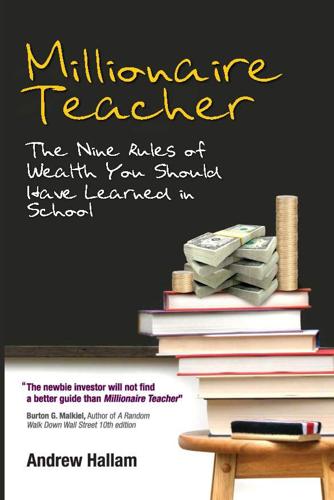
Millionaire Teacher: The Nine Rules of Wealth You Should Have Learned in School
by
Andrew Hallam
Published 1 Nov 2011
We purchased an investment newsletter subscription called the Gilder Technology Report, <www.gildertech.com/> published by a guy named George Gilder. Unbelievably, he is still in business. A quick online search today reveals a website that exhorts his stock picks, claiming his portfolio returned 155 percent during the past three years, and that if you buy now, you’ll pay just $199 for the 12-month online subscription to his newsletter. If you’re falling for that promotional garbage, I have a story for you.5 Back in 1999, we were convinced that George Guilder held the keys to the kingdom of wealth. Unfortunately for us, he was the king of pain. Today, if George Gilder reported his 11-year track record online (instead of trying to tempt investors with an unaudited three-year historical return) he would have a stampede of exiters.
…
Today, if George Gilder reported his 11-year track record online (instead of trying to tempt investors with an unaudited three-year historical return) he would have a stampede of exiters. His stock picks have been abysmal for his followers. We bought the George Gilder technology report in 1999 and we put real money down on his suggestions. I’m just hoping my investment club buddies don’t read this book and learn that George Gilder is still hawking his promises of wealth. They’d probably want to send him down a river in a barrel. Back in Chapter 4, I showed you a chart of technology companies and how far their share prices fell from 2000 to 2002.
…
$10,000 $360 And how much would your investment have to gain to get back to $40,000? In percentage terms, it would need to grow 3,400 percent. Wow—wouldn’t that be a headline for the Gilder Technology Report today? “Since 2002, our stock picks have made 3,400 percent” If that really happened, George Gilder would be advertising those numbers on his site rather than showcasing a measly return of 155 percent over the past three years. George Gilder’s stock picks have tossed investors into the Grand Canyon and he’s bragging that his investors have scaled back about 50 feet. He could tell the truth about his real stock-picking prowess, but then he couldn’t fool newsletter subscribers looking for keys to easy wealth.

Life After Google: The Fall of Big Data and the Rise of the Blockchain Economy
by
George Gilder
Published 16 Jul 2018
UFM now tops the worldwide list of the fifty best places to study classical economics, beating out even Milton Friedman’s University of Chicago.6 Peter Thiel, not known as a fan of higher education, addressed the UFM graduation ceremonies at Ibárgüen’s invitation in 2009 and received an honorary doctorate. UFM opened, for what it’s worth, a George Gilder Computer Center, attracting my attention. In June 2013, under Ibárgüen’s inspirational successor, Gabriel Calzada, UFM became the first university in the Americas to accept bitcoins for payment. The Startup Cities Institute has its home there, part of a movement Mark Klugmann conceived of, at least in part, as a vessel for digital currencies—recalling Ayau’s vision, nearly half a century ago, of a community engaged in discovering “the probable shape of the future.”
…
Necessarily restricted to specific purposes, real computers are not minds. Wealth: Tested knowledge. Physical law dictates that matter is conserved: material resources have not changed since the Stone Age. All enduring economic advances come from the increase of knowledge through learning. About the Author GEORGE GILDER, one of the leading economic and technological thinkers of the past forty years, is the author of nineteen books, including Wealth and Poverty, Life after Television, Knowledge and Power, and The Scandal of Money. A founding fellow of the Discovery Institute, where he began his study of information theory, and an influential venture investor, he lives with his wife in western Massachusetts.
…
Neal Stephenson, Snow Crash (New York: Bantam Books, 1992), 24. “So Hiro’s not actually here at all. He’s in a computer-generated universe. . . . In the lingo, this imaginary place is known as the Metaverse.” 3. C. S. Lewis, The Weight of Glory and Other Addresses (New York: The Macmillan Company, 1949), 16–29. “Transposition” is the second essay. 4. George Gilder, Life after Television: The Coming Transformation of Media and American Life (Knoxville, Tenn.: Whittle Communications, 1990); revised edition (New York: Norton, 1994). “We will discover that television was a technology with supreme powers but deadly flaws. In the beginning the powers were ascendant; now the flaws dominate.

The Rise and Fall of the Neoliberal Order: America and the World in the Free Market Era
by
Gary Gerstle
Published 14 Oct 2022
Fred Koch was also a founding member of the John Birch Society and bequeathed the intensity of his right-wing political commitments to his sons. No think tank would outdo the Cato Institute in terms of its hostility to the New Deal order and the fierceness of its belief in libertarian principles.5 Yet another think tank, the Manhattan Institute, founded in 1977, began supporting the work of George Gilder, whose celebration of free market capitalism, Wealth and Poverty, became one of the bibles of the Reagan administration and the emerging neoliberal order on its publication in 1981. Liberals and leftists were slow to recognize the size and coordinated nature of this counter-offensive, in part because it was taking shape outside the districts in which they lived and worked.
…
Irving Kristol); end welfare; punish criminals; suppress homosexuality; and rehabilitate families and thereby restore their capacity to nurture self-reliant, disciplined, and virtuous individuals. Could all Americans benefit from this program? Sometimes the neo-Victorians said yes: Many were religious men and women who had accepted the Bible’s teaching that all human beings were God’s children. Within the intellectual vanguard of this movement, both George Gilder and Thomas Sowell were adamant in their belief that the moral traditionalism they were advocating—and the economic success that would result from individuals living by a robust moral code—was accessible to all of America’s peoples, irrespective of their race or ethnicity. Sowell, one of the few African American intellectuals who embraced the free market movement, insisted again and again that blacks were as capable as Jews, Italians, Poles, and the Chinese of pulling themselves up by their bootstraps.54 Sowell emphasized this point not only to critique Great Society welfare policies that, in his eyes, had backfired, producing dysfunctional behaviors among the black poor.
…
Stewart Brand and his band of tech hipsters had completed the journey from acid-besotted merry pranksters to cybernetic masters of the universe, increasingly toasted at gatherings of the world’s economic and governmental elites at Aspen and Davos.45 This internet revolution was closely tied ideologically to visions of market freedom. Four cyberspace enthusiasts—Esther Dyson, George Gilder, George Keyworth, and Alvin Toffler—encased their IT vision in a manifesto, “Cyberspace and the American Dream: A Magna Carta for the Knowledge Age,” which they circulated in 1994. The title of the manifesto said it all: Cyberspace represented an opportunity to renew “the American Dream” and to adapt ancient and revered traditions of Anglo-American liberty for a new century.

Wealth and Poverty: A New Edition for the Twenty-First Century
by
George Gilder
Published 30 Apr 1981
Freeman, “Discrimination in the Academic Marketplace,” in Sowell, ed., American Ethnic Groups, pp. 167–200. 3 Andrew Greeley, “The Ethnic Miracle,” Public Interest, no. 45 (Fall 1976), pp. 20–36. 4 Irwin Garfinkel and Robert Haveman, with the assistance of David Betson, U.S. Department of Health, Education and Welfare, Earnings Capacity, Poverty, and Inequality, Institute for Research on Poverty Monograph Series (New York: Academic Press, 1977), p. 32 and passim. 5 Ibid. 6 George Gilder, Visible Man: A True Story of Post-Racist America (New York: Basic Books, 1978), p. 188. 7 George Gilder, Sexual Suicide (New York: Quadrangle/the New York Times Book Co., 1973), rev. ed. (New York: Bantam Books, 1974), p. 90. 8 E. A. Wrigley, Population and History (New York: McGraw-Hill, 1969), pp. 76–77. 9 Ibid., p. 13. 10 Ibid., p. 116. 11 Edward Banfield, The Moral Basis of a Backward Society (New York: the Free Press, 1958; paperback ed., 1967). 12 Adolph Berle, American Economic Republic (New York: Harcourt, Brace & World, 1963), chapter 7. 13 Christopher Jencks et al., Inequality: A Reassessment of the Effect of Family and Schooling in America (New York: Basic Books, 1972). 14 Lionel Tiger, Optimism, the Biology of Hope (New York: Simon and Schuster, 1979). 15 Ivan H.
…
Capitalism does all the things that advocates of big government claim they are trying to do: uplift the poor; expand our sense of humanity; break down xenophobic barriers between groups of people and between nations; encourage cooperation, altruism, and creativity; and let everyone, as Abraham Lincoln put it, improve their lot in life. We should glorify—or at least advocate and defend—capitalism and capitalists for moral reasons, not just material ones. The abundances they create come about precisely because of capitalism’s moral foundations. This profound, basic understanding is what makes George Gilder’s Wealth & Poverty one of the great books of Western civilization, on par with Adam Smith’s The Wealth of Nations and the late Jude Wanniski’s The Way the World Works. The original edition was published in the early 1980s when, like today, people had profound doubts about capitalism. Gilder’s opening words were, “The most important event in the recent history of ideas is the demise of the socialist dream.”
…
The typists were Sally Bergmans, who also served as an able editor, and Bernice O’Neill. My family is the source of all I am and can become and I want to thank them, my mother and Gilly, for their example and their love; and my wife, Nini, for giving me a reason and a way to live and for giving me Louisa. George Gilder Tyringham, Massachusetts July 20, 1980 NOTES Prologue 1 Richard A. Posner, The Crisis of Capitalist Democracy (Harvard University Press, 2010), 321, and A Failure of Capitalism: The Crisis of ‘08 and the Descent into Depression (Harvard University Press, 2009), 238. 2 Robert A.

After the New Economy: The Binge . . . And the Hangover That Won't Go Away
by
Doug Henwood
Published 9 May 2005
Even as we explore the most advanced reaches of science, we're returning to the age-old wisdom of our culture, a wisdom contained in the book of Genesis in the Bible: In Novelty the beginning was the spirit, and it was from this spirit that the material abundance of creation issued forth. Reagan's invocation of scripture isn't standard in the New^ Economy literature, but there's no small amount of mysticism and true-beheverhood in the doctrine. As Frank pointed out, Reagan's Hne was straight out of George Gilder—and it's quite likely Gilder's son Josh wrote the speech. Gilder is a fascinating figure; it's stunning how his seemingly wacky thoughts become conventional wisdom in a decade or less. Most centrists and Hberals found his 1981 book Wealth and Poverty, with its argument that the poor are spoiled by a generous welfare state (as if the U.S. ever had one of those) and instead need the spur of their poverty, rather implausibly brutal; just a decade later.
…
Bill CHnton won the presidency in part on a promise to "end welfare as we know it," and just a few years later, he signed a bill that did exactly that.^ And Gilder's late-1980s New Economy claims seemed loopy when he first issued them; less than a decade later, they were painfully ubiquitous. Back in the summer of 1987, when the Eighties were at their Roar-ingest, an interview with George Gilder ran on the now-departed Financial News Network. Gilder, looking hke he'd just beamed aboard from Melville's Fidele (the flagship of The Confidence-Man), ZTgaed that the trade deficit was nothing to worry about. Trade figures count only things, said the poet laureate of entrepreneurship, but what really makes the world move today is information: today, capital bounces around on sateUites and dances up and down fiber-optic cables.
…
But instead of being read as a judgment on the idiocy of all these fashions, it's being read as a case of personal corruption—if it's being read at all. Because now 36 After the New Economy Enron seems so 2002. Like Emerson, America is an endless seeker, with no past at its back, unsettling all things. But nothing can shake the faith of George Gilder (who would no doubt concur with Ken Lay's characterization of Jesus as a free-marketeer: "I believe in God and I beUeve in free markets"). As late as December 2002, Gilder wrote in Forbes that he trusts Lay and SkiUing (and Winnick and Ebbers and the whole crew) more than any pohtician, judge, or jour-nahst.
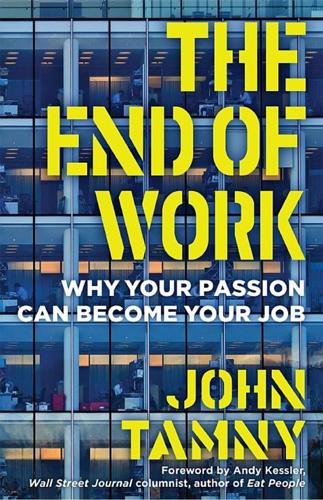
The End of Work: Why Your Passion Can Become Your Job
by
John Tamny
Published 6 May 2018
Just ask Jack Ma, a hapless Chinese student who failed his university entrance exams. Fortunately for him, he was turned down for every job he applied for—even at Kentucky Fried Chicken53—so he founded Alibaba, the Amazon of the Orient, and is now worth billions. In his classic book Wealth and Poverty, George Gilder notes that while education and credentials are most important in government, “elsewhere most skills are learned on the job.”54 It’s not that people should avoid education, but education has little to do with success in the working world. It’s said that we live in a “knowledge economy,” but most people don’t understand what that means.
…
Treasury in 2003.32 That’s a small number relative to the economy as a whole, but it looms large when we consider what entrepreneurs might have achieved with even a fraction of that $20 billion. How much entrepreneurial experimentation was lost? How many information-rich failures never happened? Taxes on wealth, like government spending, are blinders on the economy. The visionary George Gilder explains in his brilliant book Knowledge and Power that the “key to economic growth is not acquisition of things by the pursuit of monetary awards but the expansion of wealth through learning and discovery.”33 Gilder’s essential point is that information, attained through risky entrepreneurial leaps and the unexpected, is the source of economic progress.
…
Hamushek, “The Vital Link of Education and Prosperity,” Wall Street Journal, September 11, 2013. 50.Nicholas Kristof, “The Educated Giant,” New York Times, May 28, 2007. 51.Fox Butterfield, China: Alive in the Bitter Sea (New York: Times Books, 1982). 52.Ibid. 53.Tom Nagorski, “The Chutzpah of Jack Ma,” Wall Street Journal, April 9–10, 2016. 54.George Gilder, Wealth and Poverty (New York: Basic Books, 1981), 99. Chapter Four: What Was Once Silly Is Now Serious 1.Sam Kasner, “Both Huntress and Prey,” Vanity Fair, November 2014. 2.Grant Achatz and Nick Kokonas, Life, on the Line (New York: Gotham Books, 2011), 4. 3.Danny Meyer, Setting the Table: The Transforming Power of Hospitality in Business (New York: Harper, 2008), paperback edition, 10. 4.Ibid., 9. 5.Ibid., 6–7. 6.Ibid., 20–21. 7.Ibid., 22. 8.Ibid.,. 26–29. 9.Ibid., 29. 10.Ibid., 30. 11.Ibid., 1–2. 12.Ibid., 35. 13.Ibid., 35. 14.Alexandra Wolfe, “Weekend Confidential: Wolfgang Puck,” Wall Street Journal, March 26–27, 2016. 15.Ibid. 16.Achatz and Kokonas, Life, on the Line, 23. 17.Ibid., 27. 18.Ibid., 39. 19.Ibid., 288. 20.Ibid.,324. 21.Charles Passy, “Here’s the Coffee You Ordered!

Consumed: How Markets Corrupt Children, Infantilize Adults, and Swallow Citizens Whole
by
Benjamin R. Barber
Published 1 Jan 2007
This leads Kansas conservatives to gloat “when celebrities say stupid things” and to “cheer when movie stars go to jail” and in general to scream “for the heads of the liberal elite,” but then come election time “vote to cut all those rock stars’ taxes.”11 There are a few neo-Puritan romantics who go Brooks one better and actually try to keep alive the direct connection between Protestant virtue and the superannuated capitalism of yesteryear. There is perhaps no more touching, certainly no more atavistically compelling figure in recent times than George Gilder, who between stints in the 1960s as a critic of feminism and today as a champion of futuristic digital technology, managed in the early 1980s to seize on and romanticize the radical supply-side fervor of neoliberals such as David Stockman and Jack Kemp. Just as their libertarian doctrines were being put into grandiose rhetoric if not actual practice by President Ronald Reagan and Prime Minister Margaret Thatcher, Gilder wrote a book aimed at capturing what he was pleased to call “the high adventure and redemptive morality of capitalism.”12 In his Wealth and Poverty, far from abjuring Weber’s thesis, he ups the ante, gilding Weber’s dispassionate language of capitalist rationality with an ardent rhetoric of creativity, risk taking, and entrepreneurial epiphany.
…
This ethos would be made up in equal parts of an ethic of infantilized consumers and a theology of infantilized true believers. We need only revisit the rash of television entrepreneurs and business-school gurus over the last decade or two to find a tribe of preachers who, far from abandoning the language of ethics, imitate George Gilder and David Brooks and reinvent it. They draw absurdist parodies of self-rationalizing solipsism and turn them into a new capitalist ethic. Ayn Rand’s great libertarian egoist Howard Roark, who in The Fountainhead famously declared “I came here today to say that I do not recognize anyone’s right to one minute of my life…that I am a man who does not exist for others,”24 is a rather mild solipsist compared with the moralizing egotists of the new capitalism.
…
Only to get rich quick (or have a hell of a good time failing to get rich) by breaking with the past, smashing feudal conservatism, stirring imagination, and provoking inventiveness; only to dream dreams and embark on enlivening journeys, even if they lead as often to disaster as to discovery; only to fashion machines and uncover resources which, although they themselves too often squander them, in time become the basis for future capital accumulation and the building of a rational edifice of prosperity. It is protocapitalist men of this sort that George Gilder seems to be celebrating when he prefers risk-taking modern entrepreneurs to Weber’s prudent accountants, whose risk taking is always filtered by calculation. The conservative English philosopher Michael Oakeshott once described this fascinating and trustless tribe who brokered the transition from feudalism to commercial society as “younger sons making their own way in a world which had little place for them…footloose adventurers who left the land to take to trade…town-dwellers who emancipated themselves from the communal ties of the countryside…vagabond scholars.”45 These ragged explorers, uprooted from hearth, home, and comfortable country manse, breaking with the mores of a conservative landed society, were not capitalists, not even traders; but without them, prudent investment and rational management and hence capitalist accumulation and market exchange would not have been possible.

Wall Street Meat
by
Andy Kessler
Published 17 Mar 2003
Independent research has always been around, but in 1999, it blossomed in many places. One independent voice belonged to George Gilder, author, futurist and now newsletter writer working out of the Berkshires in Massachusetts. George used to write about economics and politics, but got bitten by technology and wrote his best-selling book, Microcosm, about the semiconductor industry. I read it with interest. Hey, it was my industry—I had to know everything about it. One day, back in my time at Morgan Stanley, economist Steve Roach had called me and said he had this guy, George Gilder, on the phone. He had some questions about Motorola and CDMA, a new type of cell phone protocol.
…
Plus, CDMA comes out of this little company in San Diego named Qualcomm and I doubt Motorola would use it, since they didn’t invent it.” OK, I didn’t say, “As you know.” “Too bad, CDMA is going to be big. I just figured it might be next year,” George replied. George Gilder was right, but five years too early. This would be a recurring theme. We exchanged phone numbers and emails and kept in touch over the years. He even invested in our Velocity fund. In 1999, I was reading the morning Wall Street Journal, in need of my fix of the pulse. The “Heard on the Street” column was about how George Gilder had “recommended” a number of stocks the day before. Each one of them had jumped 10–25%. He was an ax. While intoxicating, this was not good.
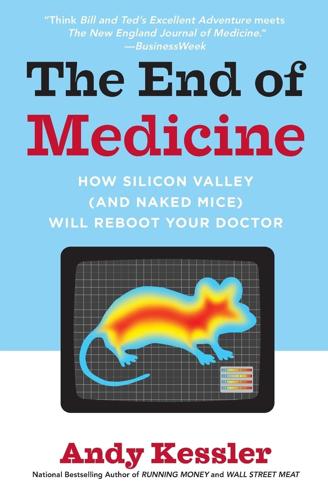
The End of Medicine: How Silicon Valley (And Naked Mice) Will Reboot Your Doctor
by
Andy Kessler
Published 12 Oct 2009
You can almost guarantee there is a decade of hassles and infighting and testing before this is ever used on humans. But I’ve seen the light. Part VI Chapter 43 Silicon and Biology George, what can we do to shake this place up?” I asked. “Depends what you want to talk about.” I was asked to introduce George Gilder to the crowd at Tony Perkins’s AlwaysOn conference. It’s a great conference, mainly about where the Internet and the Web are going, about blogs and wikis and the like. I always hate me-too kind of talks, and I think Tony set George and me up as a kind of freak show to talk about something completely different.
…
They discovered that they could create an entire sheet of this honeycomb graphite and then roll it up. They ended up with a very long, very thin, but extremely strong yet flexible tube. Its dimensions were in the nanometers, so the tubes were named carbon nanotubes. Zillions of new applications were thought up for nanotubes, mostly pie in the sky—like space elevators. After my talk with George Gilder, I was intrigued. Maybe you could construct some really tiny robot that went into your body and zapped cancer or removed plaque. Sounds farfetched, and probably is. But I needed to understand nanotech a little better. George W. Bush had recently signed a Nanotech Research Act. There was a National Nanotechnology Initiative.
…
When I started following the tech business, back in the early to mid 1980s, chips had dimensions of around three to five microns, or millionths of a meter. In 2005, the first set of chips with 65-nanometer dimensions started rolling out of fabs. That’s about a 50-fold decrease in dimensions over 20 plus years. One more halving and we are at about the size of an antibody. This is what George Gilder meant. When you get close enough to the size of interesting molecules, you no longer have to shrink dimensions—you just have to start connecting these to real-world things. I’ve been a skeptic of nanotechnology—which has been overbilled as self-replicating nanobots that could be used to build space elevators.
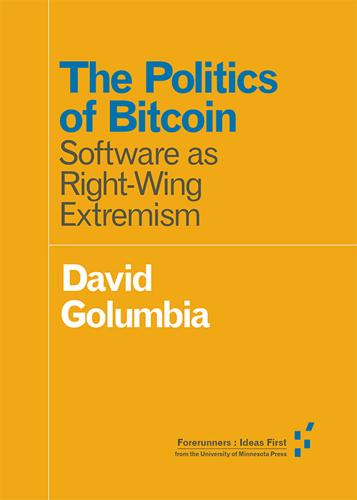
The Politics of Bitcoin: Software as Right-Wing Extremism
by
David Golumbia
Published 25 Sep 2016
The most important of these redefined terms that occur repeatedly in discussions of Bitcoin are “freedom” and “government,” both of which are central to all cyberlibertarian and political libertarian rhetoric. Referring to the 1994 manifesto “Cyberspace and the American Dream: A Magna Carta for the Knowledge Age” by Esther Dyson, George Gilder, George Keyworth, and Alvin Toffler, Winner (1997, 16) writes: Characteristic of this way of thinking is a tendency to conflate the activities of freedom-seeking individuals with the operations of enormous, profit-seeking business firms. In the “Magna Carta for the Knowledge Age,” concepts of rights, freedoms, access, and ownership justified as appropriate to individuals are marshaled to support the machinations of enormous transnational firms.
…
DuPont, Quinn. 2014. “The Politics of Cryptography: Bitcoin and the Ordering Machines.” Journal of Peer Production 4 (January). http://peerproduction.net/. DuPont, Quinn, and Bill Maurer. 2015. “Ledgers and Law in the Blockchain.” King’s Review (June 23). http://kingsreview.co.uk/. Dyson, Esther, George Gilder, George Keyworth, and Alvin Toffler. 1994. “Cyberspace and the American Dream: A Magna Carta for the Knowledge Age.” Future Insight (August). http://www.pff.org/. Emery, Joel, and Miranda Stewart. 2015. “All around the World, Regulators Are Realizing Bitcoin Is Money.” The Conversation (August 11). http://theconversation.com/.
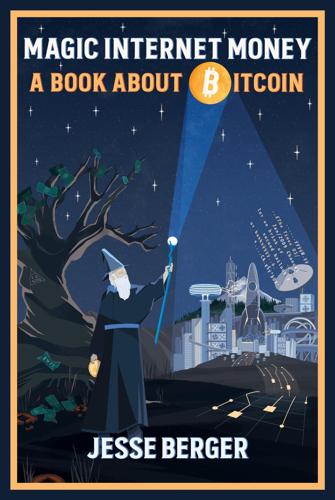
Magic Internet Money: A Book About Bitcoin
by
Jesse Berger
Published 14 Sep 2020
By virtue of its existence, Bitcoin publicly challenges our underlying assumptions about money, as well as the role of the gatekeepers tasked with determining its governance policies. To find out how, it must first be understood what makes for sound money. 3.2 Sound Money Redefined “Sound money is the equivalent of scientific integrity: the system must not permit the manipulation of data after the experiment has taken place.” George Gilder, The Scandal of Money Money can be considered fundamentally sound and ideal for long-term use if it has credibility and integrity. To do this, it must meet six key criteria, which were coined in principle by the Greek philosopher Aristotle over 2,300 years ago. Money should be durable, so it can be stored without deteriorating over time.
…
Chapter 5: Innovation 10Vildana Haijric, “Bitcoin’s 9,000,000% Rise this Decade Leaves the Skeptics Aghast” Bloomberg: Cryptocurrencies online (December 31, 2019). 11“Bitcoin’s Security Model: A Deep Dive” CoinDesk online (November 13, 2016; updated February 22, 2019). Chapter 6: Resilience 12Accredited to Robert Metcalfe in regard to Ethernet, Metcalfe’s law was presented in 1980. George Gilder expressed it in this form in 1993. Chapter 7: Scarcity 13Andrew Glester, “The Asteroid Trillionaires” physicsworld (June 11, 2018). 14Nassim Nicholas Taleb, Antifragile: Things that Gain from Disorder (Random House, 2012). Chapter 8: Competition 15Litecoin (LTC) was released via open-source on GitHub on October 7, 2011, by Charlie Lee, a Google employee and former Engineering Director at Coinbase.
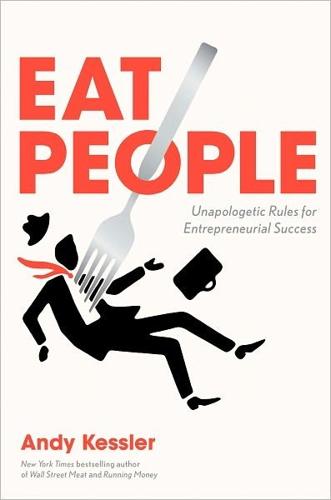
Eat People: And Other Unapologetic Rules for Game-Changing Entrepreneurs
by
Andy Kessler
Published 1 Feb 2011
The trick is to find something that Scales over a long period of time to build your productivity on. The history of wealth creation shows this as well. Find the cost decline, find the Scale, and you will find the wealth. RULE #2 Waste What’s Abundant to Make Up for What’s Scarce ON ONE OF HIS FREQUENT TRIPS TO SILICON VALLEY, I invited my friend George Gilder to dinner. George is always getting labeled as an author and a futurist, which is somewhat redundant as he often writes books about what the future is going to look like. His 1981 book Wealth and Poverty pretty much laid out the next twenty-five years as they happened, but then he fell in love with technology, writing Microcosm and Telecosm, which is how we crossed paths.
…
INSTEAD OF SCALE, the word that most often gets thrown around is sustainability. Sustainable growth. Sustainable development, sustainable cities, sustainable architecture. But it’s unclear what this even means—kind of an antiwaste thing. Thinking about sustainability, I decided it was time to get back in touch with George Gilder, so I fired off an e-mail: gg, where are you? any time to chat? ajk Andy, Nice to hear from you. I miss the scarce Bordeaux. I’m in China, talking about the pending exaflood. Can we chat by email? George gg, nice. email it is. ok, here it goes. you can’t swing a cat these days without hitting the world “sustainable.” we can’t overuse our planet’s scarce resources, blah, blah.
…
No profits, no wealth, no cancer drugs, no microbreweries, no progress. Really. Consumers are willing to pay over cost for a product or service because it has value and is cheaper than if made or done by oneself. But aren’t profits greedy? I circled back to my unsustainable, abundant, Bordeaux-sipping buddy George Gilder and asked him why profits aren’t greedy. I got back an earful. “I think about profits in moral terms. They represent the index of altruism of an investment. Profits are too often seen as a reflection of greed—that’s complete nonsense. Profits are just the difference between the value of a good or maybe service from the people who produced it, and the value to their customers.

Convergence Culture: Where Old and New Media Collide
by
Henry Jenkins
Published 31 Jul 2006
The combined forces of technology and human nature w i l l ultimately take a stronger hand i n plurality than any laws Congress can invent." Sometimes, the new media companies spoke about convergence, but by this term, they seemed to mean that o l d media w o u l d be absorbed fully and completely into the orbit of the emerging technologies. George Gilder, another digital revolutionary, dismissed such claims: "The computer industry is converging w i t h the television industry i n the same sense that the automobile converged w i t h the horse, the T V converged w i t h the nickelodeon, the word-processing program converged w i t h the typewriter, the C A D program converged w i t h the drafting board, and 3 4 Skenovano pro studijni ucely 5 6 Introduction digital desktop publishing converged w i t h the linotype machine and the letterpress."
…
The biggest change may be the shift from individualized and personalized media consumption toward consumption as a networked practice. Personalized media was one of the ideals of the digital revolution i n the early 1990s: digital media was going to "liberate" us from the "tyra n n y " of mass media, allowing us to consume only content we found personally meaningful. Conservative ideologue turned digital theorist George Gilder argued that the intrinsic properties of the computer pushed toward ever more decentralization and personalization. C o m pared to the one-size-fits-all diet of the broadcast networks, the com10 Skenovâno pro studijni uCely Conclusion ing media age w o u l d be a "feast of niches and specialties."
…
Preserving the Past i n a Digital E r a , " American Historical Review 108 (June 2003). 2. " R S T R L to Premier on C e l l Phone," I n d i a F M N e w s Bureau, December 6, 2004, h t t p : / / w w w . i n d i a f m . c o m / s c o o p / 0 4 / d e c / 0 6 1 2 r s t r l c e l l / i n d e x . s h t m l . 3. Nicholas Negroponte, Being Digital ( N e w York: A l f r e d A . K n o p f , 1995), p. 54. 4. Ibid., p p . 57-58. 5. George Gilder, " A f t e r w o r d : The Computer Juggernaut: Life after Life after Television," added to the 1994 edition of Life after Television: The Coming Transformation of Media and American Life (New York: W. W. Norton), p. 189. The book was originally published i n 1990. 6. Ithiel de Sola P o o l , Technologies of Freedom: On Free Speech in an Electronic Age (Cambridge, Mass.: H a r v a r d University Press, 1983), p . 23. 7.
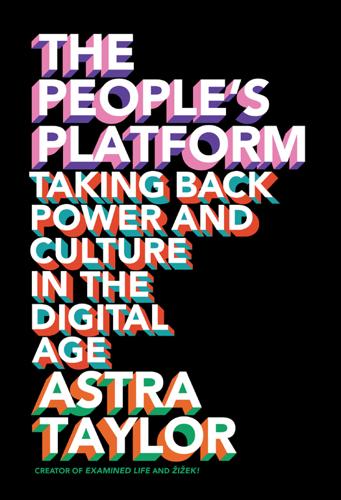
The People's Platform: Taking Back Power and Culture in the Digital Age
by
Astra Taylor
Published 4 Mar 2014
Joe Coscarelli, “Gabriel Snyder to The Atlantic Wire: On Growing Up an Aggregator,” VillageVoice.com, January 31, 2011, http://blogs.villagevoice.com/runninscared/2011/01/gabriel_snyder.php. 4: UNEQUAL UPTAKE 1. Kevin Kelly says the “atom is the past” and George Gilder talks of overthrowing material tyranny. Kevin Kelly, Out of Control: The New Biology of Machines, Social Systems and the Economic World (New York: Basic Books, 1994), 25. George Gilder, “Happy Birthday Wired,” Wired, June 2001. 2. Susan P. Crawford, “The New Digital Divide,” New York Times, December 4, 2011, SR1. 3. Those are examples taken from real life. For more, read these two profiles of leading figures in this field: Lisa Belkin, “Queen of the Mommy Bloggers,” New York Times Magazine, February 23, 2011; and Amanda Fortini, “O Pioneer Woman!
…
One optimistic startup, hoping to capitalize on the shift to electronic reading, aims to help authors cultivate identities as “tastemakers,” partnering them with brands in order to sell things like grills and barbecue sauce to readers. This kind of corporate saturation has long been the dream of free market acolytes, including tech commenter George Gilder, whose 1994 book Life After Television featured full-color ads from FedEx every few pages. At the time Gilder’s book seemed like a crass gimmick by a highly ideological eccentric; today it looks prophetic. The challenge of supporting uncompromising work is growing greater, for the unbundling of digital media means the era of cross-subsidies, whereby profits from popular wares are used to support more daring endeavors, is coming to an end.
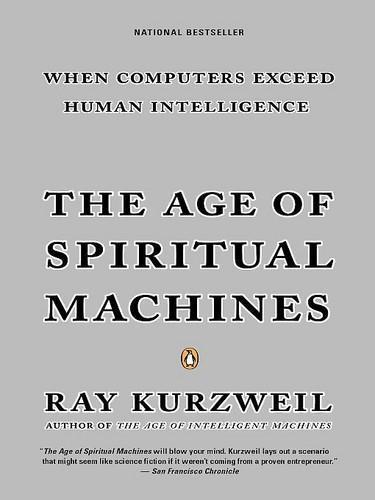
The Age of Spiritual Machines: When Computers Exceed Human Intelligence
by
Ray Kurzweil
Published 31 Dec 1998
In particular, I would like to thank:• My wife, Sonya, for her loving patience through the twists and turns of the creative process • My mother for long engaging walks with me when I was a child in the woods of Queens (yes, there were forests in Queens, New York, when I was growing up) and for her enthusiastic interest in and early support for my not-always-fully-baked ideas • My Viking editors, Barbara Grossman and Dawn Drzal, for their insightful guidance and editorial expertise and the dedicated team at Viking Penguin, including Susan Petersen, publisher; Ivan Held and Paul Slovak, marketing executives; John Jusino, copy editor; Betty Lew, designer; Jariya Wanapun, editorial assistant, and Laura Ogar, indexer • Jerry Bauer for his patient photography • David High for actually devising a spiritual machine for the cover • My literary agent, Loretta Barrett, for helping to shape this project • My wonderfully capable researchers, Wendy Dennis and Nancy Mulford, for their dedicated and resourceful efforts, and Tom Garfield for his valuable assistance • Rose Russo and Robert Brun for turning illustration ideas into beautiful visual presentations • Aaron Kleiner for his encouragement and support • George Gilder for his stimulating thoughts and insights • Harry George, Don Gonson, Larry Janowitch, Hannah Kurzweil, Rob Pressman, and Mickey Singer for engaging and helpful discussions on these topics • My readers: Peter Arnold, Melanie Baker-Futorian, Loretta Barrett, Stephen Baum, Bryan Bergeron, Mike Brown, Cheryl Cordima, Avi Coren, Wendy Dennis, Mark Dionne, Dawn Drzal, Nicholas Fabijanic, Gil Fischman, Ozzie Frankell, Vicky Frankell, Bob Frankston, Francis Ganong, Tom Garfield, Harry George, Audra Gerhardt, George Gilder, Don Gonson, Martin Greenberger, Barbara Grossman, Larry Janowitch, Aaron Kleiner, Jerry Kleiner, Allen Kurzweil, Amy Kurzweil, Arielle Kurzweil, Edith Kurzweil, Ethan Kurzweil, Hannah Kurzweil, Lenny Kurzweil, Missy Kurzweil, Nancy Kurzweil, Peter Kurzweil, Rachel Kurzweil, Sonya Kurzweil, Jo Lernout, Jon Lieff, Elliot Lobel, Cyrus Mehta, Nancy Mulford, Nicholas Mullendore, Rob Pressman, Vlad Sejnoha, Mickey Singer, Mike Sokol, Kim Storey, and Barbara Tyrell for their compliments and criticisms (the latter being the most helpful) and many invaluable suggestions • Finally, all the scientists, engineers, entrepreneurs, and artists who are busy creating the age of spiritual machines.
…
He links the relentless growth of our future technology to a universe in which Artificial Intelligence and Nanotechnology combine to bring unimaginable wealth and longevity, not merely to our descendants, but to some of those living today.” —Marvin Minsky, Professor of Media Arts and Sciences, MIT “The Age of Spiritual Machines makes all other roads to the computer future look like goat paths in Patagonia.” —George Gilder, author of Wealth and Poverty and Life After Television “A compelling vision of the future from one of our nation’s leading innovators. Kurzweil brings serious science and a twinkling sense of humor to the question of where we are headed ... With his pioneering inventions, and his penetrating ideas, Kurzweil convincingly takes us through what promises to be the most pivotal of centuries.”
…
—An Wang Economics, sociology, geopolitics, art, religion all provide powerful tools that have sufficed for centuries to explain the essential surfaces of life. To many observers, there seems nothing truly new under the sun─no need for a deep understanding of man’s new tools─no requirement to descend into the microcosm of modern electronics in order to comprehend the world. The world is all too much with us. —George Gilder If all the computers in 1960 stopped functioning, few people would have noticed. A few thousand scientists would have seen a delay in getting printouts from their last submission of data on punch cards. Some business reports would have been held up. Nothing to worry about. Circa 1999 is another matter.
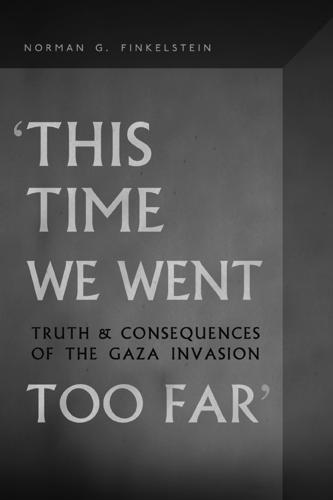
This Time We Went Too Far
by
Norman G. Finkelstein
Published 1 Jan 2010
However, apart from the inevitable dulling that comes of overuse, these weapons proved much less efficacious once criticism of Israel broke into the mainstream of public opinion. Unable to deflect criticism of Israel, apologists now conjure bizarre theories to account for its ostracism. Reaganomics guru George Gilder posits that a free-market system singularly unleashes human potential, and that under such a system Jews are and must be “represented disproportionately in the highest ranks” because they are the most gifted. Inversely, if Jews do not rule the roost, it must be because a less-than-ideal economic system holds sway.
…
Finkelstein, The Holocaust Industry: Reflections on the exploitation of Jewish suffering (New York: 2000; second expanded paperback edition, 2003), p. 3 and chapter 2. 5. See Norman G. Finkelstein, Beyond Chutzpah: On the misuse of antiSemitism and the abuse of history (Berkeley: 2005; expanded paperback edition, 2008), chapters 1–3. 6. George Gilder, The Israel Test (Minneapolis, MN: 2009), pp. 4, 13, 15, 22, 32, 36, 41, 42, 92, 109, 136, 168–73, 239, 240. According to Gilder, the real tragedy of the Nazi holocaust was that it deprived humanity of the “unique virtues and genius of its victims..., depleting the entire species of intellectual resources that will be critical to survival on an ever-threatened planet.
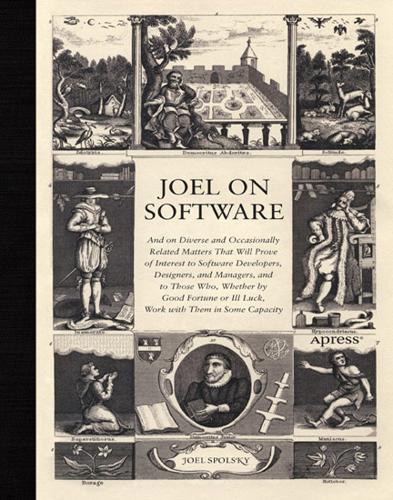
Joel on Software
by
Joel Spolsky
Published 1 Aug 2004
Here's a quote from a Sun Jini white paper:3 These three facts (you are the new sys admin, computers are nowhere, the one computer is everywhere) should combine to improve the world of using computers as computers—by making the boundaries of computers disappear, by making the computer be everywhere, and by making the details of working with the computer as simple as putting a DVD into your home theater system. And don't even remind me of the fertilizer George Gilder spread about Java:4 A fundamental break in the history of technology... That's one sure tip-off to the fact that you're being assaulted by an Architecture Astronaut: the incredible amount of bombast; the heroic, utopian grandiloquence; the boastfulness; the complete lack of reality. And people buy it!
…
No, Microsoft, computers are not suddenly going to start reading our minds and doing what we want automatically just because everyone in the world has to have a Passport account. No, Sun, we're not going to be able to analyze our corporate sales data "as simply as putting a DVD into your home theater system." __________ 3. "Why Jini Technology Now?" Sun.com, 1999. See www.sun.com/jini/whitepapers/whyjininow.html. 4. "The Coming Software Shift," George Gilder, Forbes ASAP, August 28, 1995. Remember that the architecture people are solving problems that they think they can solve, not problems that are useful to solve. SOAP + WSDL may be the Hot New Thing, but it doesn't really let you do anything you couldn't do before using other technologies—if you had a reason to.
…
At the PDC, they showed a demo where somebody used a .NET-powered cell phone and about 10 lines of mobile .NET code to take a picture, take coordinates with the GPS and convert them to a street address, take a sound recording with some notes, and upload the whole thing to a database (the proverbial "insurance adjuster's app"). All stuff you can't do with J2ME even though the phone clearly has the capability to do it. Now—the reason I mentioned the age-old sandbox problem goes back to Applets. When Applets first appeared there was a lot of George Gilder talk about how the next word processor would be a big ol' Java Applet. The trouble is that a Java Applet couldn't read or write files on the hard drive. It was in the sandbox. If it wanted persistence, it had to upload the files to some hard drive in the sky. Someone thought it was OK to allow data to persist inside the sandbox, as long as you can't get to data outside the sandbox.

When Work Disappears: The World of the New Urban Poor
by
William Julius Wilson
Published 1 Jan 1996
The GAO reached these conclusions after reviewing the results of more than one hundred empirical studies on the effects of welfare completed since 1975, analyzing the case files of more than 1,200 families receiving public assistance in four states, and interviewing officials from federal, state, and local government agencies. Although these conclusions should come as no surprise to poverty researchers familiar with the empirical literature, they should have generated a stir among members of Congress, many of whom have no doubt been influenced by the highly publicized works of conservative scholars such as George Gilder, Charles Murray, and Lawrence Mead which ascribe, without direct empirical evidence, persistent poverty and other social dislocations to the negative effects of welfare. But systematic scientific argument is no match for the dominant belief system: the views of members of Congress have apparently not been significantly altered by the GAO report.
…
Building implicitly on the basic premises of the culture-of-poverty thesis, these analysts, thrust to the fore of the policy debate by the political ascendancy of Reaganism, argued that the growth of liberal social policies since the mid-1960s had exacerbated, rather than alleviated, ghetto-related cultural tendencies. Widely read neo-conservative books such as George Gilder’s Wealth and Poverty (1981), Charles Murray’s Losing Ground (1984), and Lawrence Mead’s Beyond Entitlement (1986) presented a range of arguments dealing with the presumed adverse effects of liberal social policies on urban underclass values and behavior. Thus, the Great Society and other liberal programs were portrayed as self-defeating because they ignored the behavioral problems of the underclass, made the very poor less self-reliant, increased their joblessness, and promoted both their births outside marriage and the tendency among families to be headed by women rather than employed, productive husbands and fathers.
…
Also see Bobo and Smith (1994). 44 from 1983 to 1991 the General Social Survey: Bobo and Smith (1994). 45 Throughout the 1960s and 1970s, the expanding network of poverty researchers: See Kerbo (1981) and Tompkins (1970). 46 quotations from Walter Korpi: Korpi (1980), p. 305. 47 Another irony is that despite this narrow focus, these very same American researchers: See Wilson (1987). 48 “the paradox of continuing high poverty during a period of general prosperity”: Melville and Doble (1988), p. 1. 49 the General Accounting Office: General Accounting Office (1987). 50 conservative scholars such as George Gilder, Charles Murray, and Lawrence Mead: Gilder (1981), Murray (1984), and Mead (1986). 51 “it is the moral fabric of individuals, not the social and economic structure of society”: Wacquant and Wilson, p. 99. 52 AFDC is a joint federal and state program that provides cash benefits to eligible poor families with children: See the report by the Center on Social Welfare Policy and Law (1994). 53 An average of 9.5 million children in 5 million families: Center on Social Welfare Policy and Law (1994). 54 “Between July 1972 and 1992, the combined value of AFDC and food stamps”: Center on Social Welfare Policy and Law (1994), p. 10. 55 “At no other time in the past twenty-five years”: Center on Social Welfare Policy and Law (1994), p. 11. 56 “what the U.S.
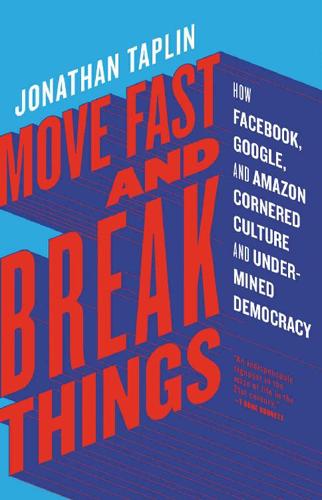
Move Fast and Break Things: How Facebook, Google, and Amazon Cornered Culture and Undermined Democracy
by
Jonathan Taplin
Published 17 Apr 2017
Forget going back to the land—there was gold in preaching that Whole Earth message in the suites of the Fortune 500. The corporate conquest of the Web had started. CHAPTER FOUR The Libertarian Counterinsurgency We are in a deadly race between politics and technology. —Peter Thiel 1. George Gilder was down on his luck. Sweating like a pig in a humid office with a broken air conditioner, he was working in 1972 for Ben Toledano, a failed candidate for mayor of New Orleans who believed he could become Louisiana’s next senator. Gilder—thirty-three, a graduate of Exeter and Harvard, and a speechwriter for Nelson Rockefeller and Richard Nixon—was toiling for beer money with a second-rate candidate who had no more chance of becoming senator than he had of becoming mayor.
…
As a teenager, his favorite book was The Lord of the Rings, which he read again and again. Later came Solzhenitsyn and Rand. Like Gilder, Thiel was outraged by feminism. By the time he showed up as an undergraduate at Stanford, his ideas on the subject were very close to Gilder’s. Years later, Gilder returned the compliment, as Forbes columnist Ralph Benko noted: “When George Gilder, arguably the smartest man in the world, says, as he said to me over dinner recently in Washington, DC, that Peter Thiel is the smartest man in the world… pay attention.” In a speech, Thiel later explained why he formed the Stanford Review: to fight feminism and political correctness on campus.

Digital Disconnect: How Capitalism Is Turning the Internet Against Democracy
by
Robert W. McChesney
Published 5 Mar 2013
That paradox prompts this book, which attempts to connect the digital revolution—arguably the most extraordinary and important development of the past half century—to the overriding crises of our times. I began writing this book twenty years ago, in 1992. I was putting the finishing touches on my first book and was about to put it in the mail when I read a review of George Gilder’s Life After Television in the Financial Times. Gilder argued that the Internet was in the process of eliminating broadcasting as we knew it. The Internet would also eliminate all traditional concerns about media monopoly and commercialism and terminate the need for policy making. Just let the market do its thing and witness the greatest democratic communication revolution ever.
…
For the big questions, the way to start is by reviewing the body of work produced by public intellectuals and scholars from a wide range of disciplines that has assessed the Internet over the past two decades, attempting to locate it in a broad historical perspective. Going back to the early 1990s—from George Gilder’s Life after Television and Nicholas Negroponte’s Being Digital to Clifford Stoll’s Silicon Snake Oil and Lawrence Lessig’s Code and Other Laws of Cyberspace, numerous writers have provided their assessment of the digital revolution. As one might expect, some of this material ages well, and some of it now seems ridiculous.
…
The revolutionary nature of the technology could trump the monopolizing force of the market. This might help explain the 1990s alliance of sorts forged between some prominent counterculture types who embraced the Internet, like Stewart Brand, John Perry Barlow, and Esther Dyson, with free-market ideologues and techno-enthusiasts, like George Gilder and Newt Gingrich.41 Third, even in the context of a corporation-dominated polity, the political culture of the 1990s was close to an all-time high for procapitalist sentiment and close to an all-time low for notions of public service or regulation. The notions of public goods and regulation in the public interest were suspect, if not ridiculed.
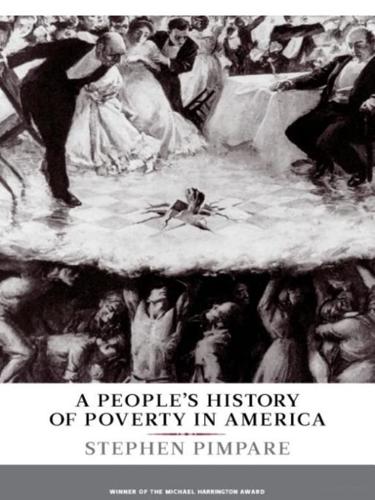
A People's History of Poverty in America
by
Stephen Pimpare
Published 11 Nov 2008
To prevent a constant and alarming increase of these two classes of persons, the only way is for the community to refuse to support any except those whom it can control—that is, except those who will submit themselves to discipline and coercion.64 It became common again with late-twentieth-century welfare opponents such as George Gilder and Newt Gingrich, among others, taking eugenicist and racist form with Charles Murray and Richard Herrnstein’s The Bell Curve.65 Here’s how Robert Rector expressed the need to control poor women: True charity begins by requiring responsible behavior from the beneficiary as a condition of receiving aid.
…
And income inequality is higher in the United States than in any other advanced nation—and has been increasing for the past forty years, after a brief period in the midtwentieth century when it was in decline.43 While official poverty has declined modestly over the past forty years (from 17.3 percent in 1965 to 12.6 percent in 2005), inequality is much worse, at levels not seen since the Gilded Age or the eve of the Great Depression. But perhaps, as economist Charles Peguy said, inequality in and of itself is not necessarily of great concern: “When all men are provided with the necessities . . . what do we care about the distribution of luxury?”44 George Gilder even argued in 1981 that inequality was the means toward equality:To lift the incomes of the poor, it will be necessary to increase the rates of investment, which in turn will tend to enlarge the wealth, if not the consumption, of the rich. The poor, as they move into the workforce and acquire promotions, will raise their income by a greater percentage than the rich, but the upper classes will gain by greater absolute amounts, and the gap between the rich and the poor may grow.45 He predicted accurately, in part.
…
Census Bureau, “Service Annual Survey 2004,” April 2006. 42 B.A. Botkin, ed., Sidewalks of America: Folklore, Legends, Sagas, Traditions, Customs, Songs, Stories and Sayings of City Folk (Indianapolis: Bobbs-Merrill, 1954), 56. 43 Smeeding, “Public Policy, Economic Inequality, and Poverty,” 955–83. 44 Quoted in Macdonald, “Our Invisible Poor,” 86. 45 George Gilder, Wealth and Poverty (San Francisco: ICS, 1981 [1993]), 78. 46 Smeeding, “Public Policy, Economic Inequality, and Poverty,” 955–83. 47 Lawrence Mishel, Jared Bernstein, and John Schmitt, The State of Working America 1996–1997 (New York: Economic Policy Institute/M.E. Sharpe, 1997). 48 Lawrence Mishel, Jared Bernstein, and Sylvia Allegretto, The State of Working America 2006/2007 (Ithaca, NY: ILR/Cornell University Press, 2007). 49 “The Maxwell Poll: Civic Engagement and Inequality,” April 2005, poll.campbellinstitute.org. 50 Gabriel Lenz, “The Policy-Related Causes and Consequences of Income Inequality,” Russell Sage Foundation, January 2003; Benjamin I.

Smart Cities: Big Data, Civic Hackers, and the Quest for a New Utopia
by
Anthony M. Townsend
Published 29 Sep 2013
C. McClurg, 1910), 222. 24“The Knowledge Explosion,” BBC Horizon series, originally broadcast September 21, 1964, archived at http://www.youtube.com/watch?v=KT_8-pjuctM. 25“City vs. Country: Tom Peters & George Gilder debate the impact of technology on location,” Forbes ASAP, February 27, 1995, http://business.highbeam.com/392705/article-1G1-16514107/city-vs-country-tom-peters-george-gilder-debate-impact. 26David McCandless, “Financial Times Graphic World,” display at Grand Central Station, New York, March 27–29, 2012. 27Robert Caro, The Power Broker: Robert Moses and the Fall of New York (New York: Vintage, 1975), 849. 28Caro, The Power Broker, 508. 29“Global Investment in Smart City Technology Infrastructure to Total $108 Billion by 2020,” Pike Research, last modified May 23, 2011, http://www.pikeresearch.com/newsroom/global-investment-in-smart-city-technology-infrastructure-to-total-108-billion-by-2020. 30Daniel Fisher, “Urban Outfitter,” Forbes, May 9, 2011, 92. 31Sascha Haselmeyer, lecture, INTA33 World Urban Development Congress, Kaoshiung, Taiwan, October 5, 2009. 32“The Explosive Growth of Bus Rapid Transit,” The Dirt, blog, American Society of Landscape Architects, last modified January 27, 2011, http://dirt.asla.org/2011/01/27/the-explosive-growth-of-bus-rapid-transit/. 33Peter Jamison, “BART Jams Cell Phone Service to Shut Down Protests,” SF Weekly: The Snitch, blog, August 12, 201, http://blogs.sfweekly.com/thesnitch/2011/08/bart_cell_phones.php; BlackBerry: Josh Halliday, “David Cameron considers banning suspected rioters from social media,” The Guardian, August 11, 2011, http://www.guardian.co.uk/media/2011/aug/11/david-cameron-rioters-social-media; social media: Chris Hogg, “In wake of London riots, UK considers social media bans,” Future of Media, blog, http://www.futureofmediaevents.com/2011/08/11/in-wake-of-london-riots-uk-considers-social-media-bans/#ixzz24xS7KHKP. 34Solomon Benjamin et al., “Bhoomi: ‘E-Governance,’ Or, An Anti-Politics Machine Necessary to Globalize Bangalore?”
…
Clarke articulated a vision of the future where, thanks to satellite communications, “It will be possible . . . perhaps only fifty years from now, for a man to conduct his business from Tahiti or Bali, just as well as he could from London.”24 More recently, as the Internet began its meteoric rise in the mid-1990s, tech pundit George Gilder wrote off cities as “leftover baggage from the industrial era.”25 But instead of disintegrating, London grew bigger, richer, more vital and connected than ever. Instead of undermining the city, new telecommunications technologies played a crucial role in London’s success—it is the hub of a global tangle of fiber-optic networks that plug its financiers and media tycoons directly into the lives of billions of people all over the world.

Surveillance Valley: The Rise of the Military-Digital Complex
by
Yasha Levine
Published 6 Feb 2018
It did not matter who you were—Republican, Democrat, liberal, or libertarian—everyone seemed to share this single, unflinching conviction: the world was on the cusp of a technology revolution that would change everything, and change it for the better. Few embodied the early years of this new Great Awakening more than George Gilder, an old-school Reaganomics pundit who in the early 1990s reinvented himself as a techno prophet and investment guru. In his book Telecosm, he explained how computer networks combined with the power of American capitalism were about to create a paradise on earth. He even came up with a name for this utopia: the Telecosm.
…
Among the pantheon of techno-heroes promoted in the magazine’s pages were right-wing politicians and pundits, telecom tycoons, and corporate lobbyists who swirled around Washington to whip up excitement and push for a privatized, corporate-dominated Internet and telecommunications infrastructure. Republican congressman Newt Gingrich and Ronald Reagan’s economics guru George Gilder graced the magazine’s cover, their push for a privatized telecommunication system profiled—and their retrograde views on women’s rights, abortion, and civil rights played down and ultimately ignored.99 John Malone, the billionaire cable monopolist at the head of TCI and one of the largest landowners in the United States, made the cut as well.
…
Rossetto expanded this quote into a full-blown manifesto in Wired’s UK edition: “The most fascinating and powerful people today are not politicians or priests, or generals or pundits, but the vanguard who are integrating digital technologies into their business and personal lives, and causing social changes so profound that their only parallel is probably the discovery of fire.” 2. Kevin Kelly, New Rules for the New Economy: 10 Radical Strategies for a Connected World (New York: Viking Adult, 1998). 3. Rich Karlgaard and Michael Malone, “City vs. Country: Tom Peters & George Gilder Debate the Impact of Technology on Location,” Forbes ASAP, February 27, 1995. 4. “Task Force to Focus on Information Revolution,” Deseret (UT) News, September 15, 1993, http://www.deseretnews.com/article/309821/TASK-FORCE-TO-FOCUS-ON-INFORMATION-REVOLUTION.html. 5. I attempted to interview Stewart Brand for this book, but he declined.

Listen, Liberal: Or, What Ever Happened to the Party of the People?
by
Thomas Frank
Published 15 Mar 2016
Obama: “I know you’re OK with that.”3 In the 1980s and ’90s, Silicon Valley was not a particularly Democratic industry. Its libertarianism was well-known and the subject of endless fascination; its leaders were among the richest people in the world; and its great chronicler and booster at the time, George Gilder, was a prominent conservative intellectual whose works had been influential in the Reagan administration. Gilder’s take on Silicon Valley’s politics went far beyond the partisan preferences of its leading figures; the primacy of market economics, Gilder said, was actually inscribed in the structure of the microchip itself.
…
DeWayne Davis and Jeff Lemieux, “Closing the Income Gap,” Blueprint, Summer 2000. 6: THE HIPSTER AND THE BANKER SHOULD BE FRIENDS 1. See Reagan’s 1988 speech at Moscow State University; it is reprinted, among other places, on the website of the Miller Center at the University of Virginia. The conservative author George Gilder, one of Reagan’s favorites, wrote one of the earliest and most forceful accounts of the New Economy ideology in his 1989 book Microcosm. 2. The DLC’s think tank was the Progressive Policy Institute; their 1999 report was called “The State New Economy Index.” Other installments were issued periodically throughout the decade to come.

To Serve God and Wal-Mart: The Making of Christian Free Enterprise
by
Bethany Moreton
Published 15 May 2009
The hidden work of Â�women in the part-Â�time and unpaid economies that had supported the industrial “family wage” could not be ignored as real wages stagnated after 1973 and a steadily increasing proportion of families relied on two full-Â�time wage earners.102 For conservative theorists of male supremacy, this changed economic landscape presented substantial challenges. George Gilder, the bestselling economist who promoted Reaganomics’ supply-Â�side theories in regular opinion pieces for the Wall Street Journal, wrote that Â�women needed to be excluded from the economic arena not because they were unfit for the work but because “males always require a special arena of glorified achievement from which Â�women are excluded” in order to protect their manhood.103 Like more nuanced Christian authors that followed him, Gilder grounded his argument for male prerogative on a startlingly negative assessment of men.
…
This prosperity gospel was an international movement, linking Christians from Colorado Springs to Kinshasa to Seoul.8 Many evangelicals, meanwhile, saw entrepreneurs as public benefactors who brought the blessing of goods and serÂ�vices to an ever-Â�wider public. “The man who makes the highest Â�profit,” explained the Texas-Â�based Institute for Christian Economics in 1981, “is the man who is best serving the public.”9 Evangelical€ opinion-Â�makers enthusiastically Â�adopted the economic visions of George Gilder and Michael Novak, putÂ�ting a Christian spin on globÂ�alÂ�iÂ� zaÂ�tion.10 Georgia congressman Newt Gingrich, a family values standardÂ�bearer, championed a high-Â�tech, high-Â�growth, expansionist entrepreneurship that condemned trade barriers alongside other big-Â�government intrusions. In this context, transnational corporations opened up new opportunities for evangelizing around the world.
…
“Table Ba579-582: Labor force parÂ�ticÂ�iÂ�paÂ�tion rate for married Â�women, by age and presence of children: 1948–1999,” Historical Statistics of the United States, Millennial Edition On Line, ed. Susan B. Carter, Scott Sigmund Gartner, Michael R. Haines, Alan L. Olmstead, Richard Sutch, and Gavin Wright (Cambridge: Cambridge University Press, 2006). Haynes Bonner Johnson, Sleepwalking Through History: America in the Reagan Years (New York: Anchor Books, 1992), 113–15; George Gilder, Men and Marriage 311 NOTES TO PAGES 123 – 1 2 7 (Gretna, LA: Pelican, 1993; orig. pub. Sexual Suicide, 1973), 39, quoted in Kintz, Between Jesus and the Market, 169. 104. Kintz, Between Jesus and the Market, 157. 8. Making Christian Businessmen 1. Mark Blyth, Great Transformations: Economic Ideas and Institutional Change in the Twentieth Century (Cambridge: Cambridge University Press, 2002), 167–69; Barry Bluestone and Bennett Harrison, The Deindustrialization of America: Plant Closings, Community Abandonment, and the Dismantling of Basic Industry (New York: Basic Books, 1982), 95; Bluestone and Harrison, The Great U-Turn: Corporate Restructuring and the Polarizing of America (New York: Basic Books, 1988), 3–5; Mike Davis, Prisoners of the American Dream: Politics and Economy in the History of the U.S.
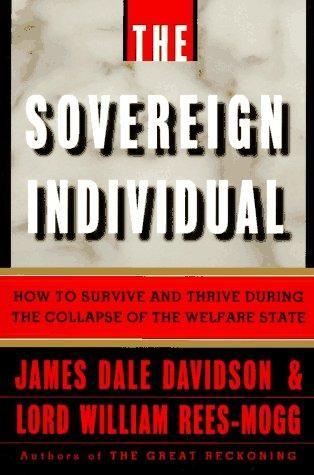
The Sovereign Individual: How to Survive and Thrive During the Collapse of the Welfare State
by
James Dale Davidson
and
William Rees-Mogg
Published 3 Feb 1997
West in his Adam Smith and Modern Economics (Aldershot, England: Edward Elgar Publishing, 1990), pp.88-89. 15. Fritz Rorig, The Medieval Town (Berkeley: University of California Press, 1967), p.28. 16. Albert 0. Hirschman, Exit, Voice, and Loyalty (Cambridge: Harvard University Press, 1969), p.81. 17. Tom Peters and George Gilder, "City vs. Country: Tom Peters & George Gilder Debate the Impact of Technology on Location," Forbes, February 1995. 18. Weber, op. cit., p.21. 19. Ibid., p.46 for London, p.73 for Paris. 20. Ibid., p.120. 21. Ibid., p.95. 22. Ibid., p.84. 23. Ibid., p.119. 24. Ibid., p.101. 25. Ibid., p.5. 26. See Ronald Coase, "The Nature of the Firm," reprinted in Louis Putterman and Randall S.
…
Above all, Moore’s Law will overthrow the key concentration, the key physical conglomeration of power in America today: the big city-that big set of industrial cities that now lives on hie -support systems-some 360 billion of direct subsidies from all the rest of us every year Big cities are leftover baggage from the industrial era."'17 -GEORGE GILDER A peculiar irony of the reemergence of micro-sovereignties or "city-states" is that it may coincide with the emptying out of many cities. The large city was largely an artifact of industrialism in the West. It arose with the factory system to capture scale economies in the manufacture of products with high natural resource content.
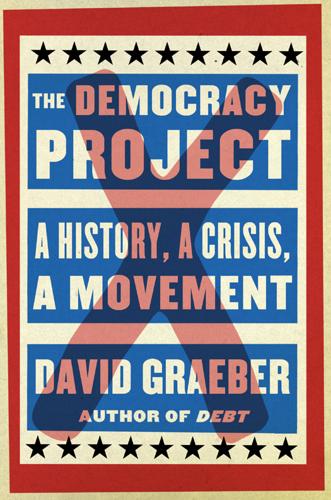
The Democracy Project: A History, a Crisis, a Movement
by
David Graeber
Published 13 Aug 2012
Indeed, as the reporter goes on to explain, there’s an elaborate theology behind this kind of language. Since the 1980s, those on the Christian right—who formed the core of George W. Bush’s inner circle—turned what was then called “supply-side economics” into a literally religious principle. The greatest avatar of this line of thought was probably conservative strategist George Gilder, who argued that the policy of the Federal Reserve creating money and transferring it directly to entrepreneurs to realize their creative visions was, in fact, merely a human-scale reenactment of God’s original creation of the world out of nothing, by the power of His own thought. This view came to be widely embraced by televange-lists like Pat Robertson, who referred to supply-side economics as “the first truly divine theory of money creation.”
…
Technically during those hours they are working as private security, but they do so in their uniforms, with guns and badges and full power of arrest. 16. Andrew Ross Sorkin, “On Wall Street, a Protest Matures,” New York Times, Dealbook, October 3, 2011. 17. Ron Suskind, “Faith, Certainty and the Presidency of George W. Bush,” New York Times Magazine, October 17, 2004. 18. George Gilder, Wealth and Poverty (New York: Basic Books, 1981), and Pat Robertson quote both cited in Melinda Cooper, “The Unborn Born Again: Neo-Imperialism, the Evangelical Right and the Culture of Life,” Postmodern Culture, 17 (1), Fall 2006; Robertson 1992:153. 19. Rebecca Solnit, “Why the Media Loves the Violence of Protestors and Not of Banks,” Tomdispatch.com, February 21, 2012.
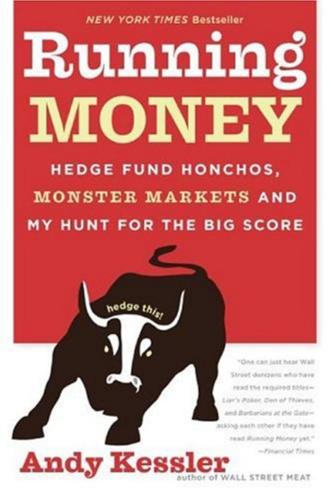
Running Money
by
Andy Kessler
Published 4 Jun 2007
I looked over and noticed for the first time the man sitting next to me at the table. I started chuckling because he kind of looked like a cross between Soupy Sales and Eddie Munster. It was lunchtime at George Gilder’s Telecosm conference, and we were waiting for the featured speaker, Gary Winnick of Global Crossing, to explain how he sends billions of packets per second under the Atlantic Ocean. George Gilder has hosted his Telecosm conference for years. Tech luminaries like Carver Mead, Bob Metcalfe and Paul Allen were regulars. “I don’t know what the first packet was,” I confessed. My tablemate turned out to be Leonard Kleinrock, a UCLA professor, according to his name tag.

Cryptoassets: The Innovative Investor's Guide to Bitcoin and Beyond: The Innovative Investor's Guide to Bitcoin and Beyond
by
Chris Burniske
and
Jack Tatar
Published 19 Oct 2017
HARVEY, former president of the American Finance Association and professor of finance at the Fuqua School of Business at Duke University Cryptoassets is the definitive guide that comes just in time to introduce you to a radically new era of innovative investment. This book tells you all you need to know to invest in this supreme opportunity of our time: replacing the porous top-down “winner-take-all” Internet with a safe and cornucopian cadastre of trust and opportunity that makes us all potential winners. —GEORGE GILDER, cofounder of the Discovery Institute and author of The Scandal of Money The growth and importance of cryptocurrency and cryptocomputing rivals the early growth of the commercial Internet and web, and the technical and economic revolution that will result is perhaps even more significant than the first phase of the Internet.
…
Special thanks to all of those in the cryptoasset and financial community who provided ideas, advice, and commentary, especially the awesome trio of Alex Sunnarborg, Patrick Archambeau, and Pieter Gorsira, as well as Charles Bovaird, Balaji Srinivasan, Arthur Laffer, Michael Casey, Alex Tapscott, Ric Edelman, Campbell Harvey, George Gilder, Jeremy Allaire, Vinny Lingham, Laura Shin, Christian Catalini, Sandra Ro, Spencer Bogart, David Kinitsky, John McAfee, Ryan Selkis, Adam White, Jesse Walden, William Mougayer, Michael Terpin, Jennifer Zhu Scott, Pat Bolland, Greg Rosen, Luis Cuende, Travis Scher, Peter Kirby, Stephen McKeon, Paul Veradittakit, Ari Paul, Charlie Hayter, Demian Brener, Ron Quaranta, Jared Harwayne-Gidansky, Ned Scott, Alessio Saretto, Tron Black, Douglas Goldstein, Matthew Goetz, Tom Szaky, Fred Pye, Ryan Lancelot, Cristina Dolan, Ryan Strauss, Jack Hough, and of course to Brian Kelly for his support, friendship, and assistance.
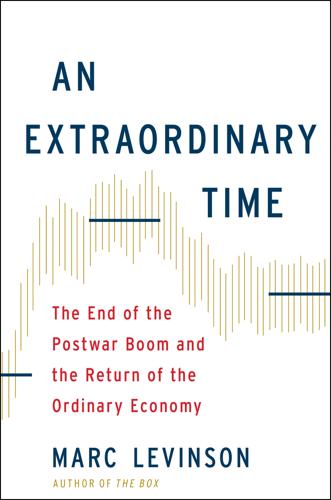
An Extraordinary Time: The End of the Postwar Boom and the Return of the Ordinary Economy
by
Marc Levinson
Published 31 Jul 2016
Supply-side thinking had major implications for economic policy. One was that the government should spend less money, especially on social-welfare programs. “[R]eal poverty is less a state of income than a state of mind, and . . . the government dole blights most of the people who come to depend on it,” George Gilder, one of the most gifted of the supply-side proselytizers, asserted in a 1981 best seller, Wealth and Poverty. Payments to the unemployed “deter productive work” and should be curtailed. “In fact,” Gilder asserted, “nearly all the programs that are advocated by economists to promote equality and combat poverty—and are often rationalized in terms of stimulating consumption—in actuality reduce demand by undermining the production from which all real demand derives.”
…
Volcker, The Rediscovery of the Business Cycle (New York: Free Press, 1978), 61–62; John Berry, “Fed Lifts Discount Rate to Peak 11% on Close Vote,” Washington Post, September 19, 1979. 7. For a practical explanation of how the Fed’s reserve targeting worked, see Richard W. Lang, “The FOMC in 1979: Introducing Reserve Targeting,” Federal Reserve Bank of St. Louis Quarterly Review (March 1980): 2–25. 8. Allen quotation from Cronin, Global Rules, 93. 9. George Gilder, Wealth and Poverty (New York: Basic Books, 1981), 12, 45. Other important books by supply-siders include Jude Wanniski, The Way the World Works (Washington, DC: Regnery, 1978); Paul Craig Roberts, The Supply-Side Revolution (Cambridge, MA: Harvard University Press, 1984); Bruce R. Bartlett and Timothy Roth, eds., The Supply-Side Solution (London: Macmillan, 1983); and Victor A.
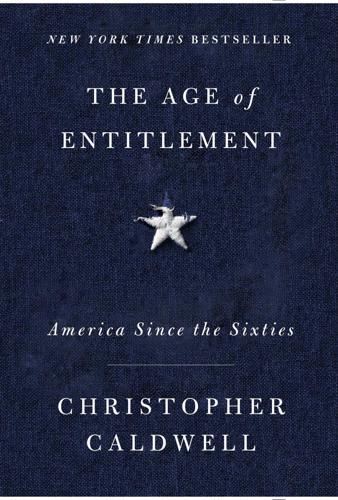
The Age of Entitlement: America Since the Sixties
by
Christopher Caldwell
Published 21 Jan 2020
Government would continue to grow by 2.5 percent a year throughout his administration. The difficulty of shrinking government led nobody in the president’s entourage to reconsider his tax cuts. A means had become an end. “Even if Congress manages to pass the usual boondoggles,” wrote the journalist George Gilder in his 1981 book Wealth and Poverty, “we should not abandon the drive to retrench taxes.” Having railed against the “Keynesian” demand-side stimulus of his predecessors, Reagan wound up presiding over nearly a decade of full-throttle stimulus himself, along with the overheated private-sector economy and large annual deficits that are its hallmark.
…
In an autumn 1981 economic address: Reagan, “Address to the Nation on the Program for Economic Recovery.” “We cut the government’s”: Ibid. Government would continue to grow: William A. Niskanen, “Reaganomics,” The Concise Encyclopedia of Economics, Library of Economics and Liberty. Online at econlib.org. “Even if Congress manages”: George Gilder, Wealth and Poverty (New York: Basic Books, 1981), 225. “more trade barriers”: Niskanen, “Reaganomics.” “from discretionary domestic spending”: Ibid. Although the size of the total credit market: Richard Duncan, The New Depression: The Breakdown of the Paper Money Economy (Singapore: John Wiley & Sons, 2012), 59.

Coming Apart: The State of White America, 1960-2010
by
Charles Murray
Published 1 Jan 2012
“It’s Because They Didn’t Marry” It makes sense that women would choose mates who have already exhibited evidence that they will be successful economically, and social scientists have demonstrated that this is in fact a statistical tendency: Men with high earnings are more likely to get married and less likely to get divorced.15 But there’s another possibility: Married men become more productive after they are married because they are married. Economist Gary Becker predicted this outcome in A Treatise on the Family because of the advantages of role specialization in marriage.16 George Gilder predicted it even earlier, in Sexual Suicide, through a more inflammatory argument: Unmarried males arriving at adulthood are barbarians who are then civilized by women through marriage. The inflammatory part was that Gilder saw disaster looming as women stopped performing this function, a position derided as the worst kind of patriarchal sexism.17 But, put in less vivid language, the argument is neither implausible nor inflammatory: The responsibilities of marriage induce young men to settle down, focus, and get to work.
…
The meaning of all this is that the labor force problems that grew in Fishtown from 1960 to 2010 are intimately connected with the increase in the number of unmarried men in Fishtown. The balance of the literature suggests that the causal arrow for the marriage premium goes mostly from marriage to labor force behavior—in other words, George Gilder was probably mostly right. But some causation goes the other way as well. In the 2000s Fishtown had a lot fewer men who were indicating that they would be good providers if the woman took a chance and married one of them than it had in 1960. What Whites Did About Work: Women Detecting changes in industriousness among American women is impossible unless you assume that a woman working at a paid job is more industrious than a full-time mother, which is not an assumption that I am willing to make.

Bit by Bit: How P2P Is Freeing the World
by
Jeffrey Tucker
Published 7 Jan 2015
That doesn’t mean we don’t have to fight for it. But this fight is no longer about muskets and barricades. It’s about innovation, cleverness, and being the revolution in our own lives and economic relationships. 89 Books To Read John T Flynn, As We Go Marching (Laissez Faire Books, 2014 [1944]). George Gilder, Knowledge and Power: The Information Theory of Capitalism and How It Is Revolutionizing Our World (Regnery, 2013). F.A. Hayek, Law, Legislation, and Liberty, volumes I, II, and III (University of Chicago Press, 1978, 1981). Ludwig von Mises, Nation, State, and Economy (Liberty Fund, 2005 [1919]).

Blockchain Revolution: How the Technology Behind Bitcoin Is Changing Money, Business, and the World
by
Don Tapscott
and
Alex Tapscott
Published 9 May 2016
Clippinger, CEO, ID3, Research Scientist, MIT Media Lab Bram Cohen, Creator, BitTorrent Amy Cortese, Journalist, Founder, Locavest J-F Courville, Chief Operating Officer, RBC Wealth Management Patrick Deegan, CTO, Personal BlackBox Primavera De Filippi, Permanent Researcher, CNRS and Faculty Associate at the Berkman Center for Internet and Society at Harvard Law School Hernando de Soto, President, Institute for Liberty and Democracy Peronet Despeignes, Special Ops, Augur Jacob Dienelt, Blockchain Architect and CFO, itBit and Factom Joel Dietz, Swarm Corp Helen Disney, (formerly) Bitcoin Foundation Adam Draper, CEO and Founder, Boost VC Timothy Cook Draper, Venture Capitalist; Founder, Draper Fisher Jurvetson Andrew Dudley, Founder and CEO, Earth Observation Joshua Fairfield, Professor of Law, Washington and Lee University Grant Fondo, Partner, Securities Litigation and White Collar Defense Group, Privacy and Data Security Practice, Goodwin Procter LLP Brian Forde, Former Senior Adviser, The White House; Director, Digital Currency, MIT Media Lab Mike Gault, CEO, Guardtime George Gilder, Founder and Partner, Gilder Technology Fund Geoff Gordon, CEO, Vogogo Vinay Gupta, Release Coordinator, Ethereum James Hazard, Founder, Common Accord Imogen Heap, Grammy-Winning Musician and Songwriter Mike Hearn, Former Google Engineer, Vinumeris/Lighthouse Austin Hill, Cofounder and Chief Instigator, Blockstream Toomas Hendrik Ilves, President of Estonia Joichi Ito, Director, MIT Media Lab Eric Jennings, Cofounder and CEO, Filament Izabella Kaminska, Financial Reporter, Financial Times Paul Kemp-Robertson, Cofounder and Editorial Director, Contagious Communications Andrew Keys, Consensus Systems Joyce Kim, Executive Director, Stellar Development Foundation Peter Kirby, CEO and Cofounder, Factom Joey Krug, Core Developer, Augur Haluk Kulin, CEO, Personal BlackBox Chris Larsen, CEO, Ripple Labs Benjamin Lawsky, Former Superintendent of Financial Services for the State of New York; CEO, The Lawsky Group Charlie Lee, Creator, CTO; Former Engineering Manager, Litecoin Matthew Leibowitz, Partner, Plaza Ventures Vinny Lingham, CEO, Gyft Juan Llanos, EVP of Strategic Partnerships and Chief Transparency Officer, Bitreserve.org Joseph Lubin, CEO, Consensus Systems Adam Ludwin, Founder, Chain.com Christian Lundkvist, Balanc3 David McKay, President and Chief Executive Officer, RBC Janna McManus, Global PR Director, BitFury Mickey McManus, Maya Institute Jesse McWaters, Financial Innovation Specialist, World Economic Forum Blythe Masters, CEO, Digital Asset Holdings Alistair Mitchell, Managing Partner, Generation Ventures Carlos Moreira, Founder, Chairman, and CEO, WISeKey Tom Mornini, Founder and Customer Advocate, Subledger Ethan Nadelmann, Executive Director, Drug Policy Alliance Adam Nanjee, Head of Fintech Cluster, MaRS Daniel Neis, CEO and Cofounder, KOINA Kelly Olson, New Business Initiative, Intel Steve Omohundro, President, Self-Aware Systems Jim Orlando, Managing Director, OMERS Ventures Lawrence Orsini, Cofounder and Principal, LO3 Energy Paul Pacifico, CEO, Featured Artists Coalition Jose Pagliery, Staff Reporter, CNNMoney Stephen Pair, Cofounder and CEO, BitPay Inc.
…
Today she is also leading as an entrepreneur, collaborating on the development of the Bitcoin Lightning Network to solve the blockchain’s scalability issue. Perianne Boring, a former journalist and TV reporter, is the founder of the Chamber for Digital Commerce, a trade-based association in Washington, D.C. Within a year, CDC has attracted a high-profile board (e.g., Blythe Masters, James Newsome, George Gilder). The movement needed “boots on the ground in Washington to open a dialogue with government,” she said. With her background in journalism, Boring focused on messaging, positioning, and polish. Her organization is “open to anyone who is committed to growing this community,” she said, and is now a leading voice in policy, advocacy, and knowledge in the burgeoning blockchain governance ecosystem.25 This growing chorus of leaders lobbying for governance is as prescient as it is urgent.
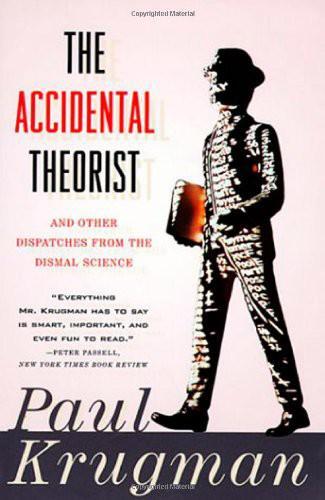
The Accidental Theorist: And Other Dispatches From the Dismal Science
by
Paul Krugman
Published 18 Feb 2010
The reason the electorate likes tax reform schemes is that they always end up being tax-cutting schemes, based on the premise that the voters pay taxes but someone else gets the benefits—even though anyone who looks at where the money actually goes quickly realizes that Pogo was right: We have met the enemy and they are us. As a result, not only do prominent conservatives rarely support proposals to extend the range of the market; they often actively oppose them. For example, the supply-side guru George Gilder has campaigned vociferously against plans to auction off a limited slice of the airwaves. Instead, incredibly, he advocates anarchy—let anyone broadcast on whatever frequency he likes. This is crazy; what it reflects, one suspects, is a basic unwillingness to accept the idea that there are any scarce resources, any limits that must be respected.
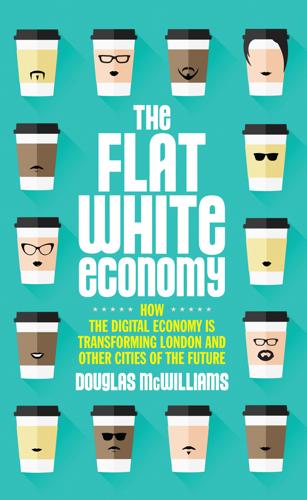
The Flat White Economy
by
Douglas McWilliams
Published 15 Feb 2015
If you add taxes and subtract subsidies from the GVA data you get the GDP for the region. 6 www.ons.gov.uk/ons/rel/bus-register/business-register-employment-survey/2013-provisional/info-jobs-growth-by-region-and-industry.html CHAPTER TWO 1. ‘The Economics of Information’, George J Stigler, Chicago University Journal of Political Economy, June 1961, pp213–225. 2. Originally published as ‘Metcalfe’s Law and Legacy’, Forbes ASAP, September 1993, and developed in Telecosm, George Gilder, Simon & Schuster, 1996. 3. I first presented these arguments with some accompanying detail to the IBM Computer Users Association in May 1989 – they have changed remarkably little in the past 25 years! 4. ‘The Economic Impact of Cloud Computing: a Cebr report for EMC2’, Cebr, December 2010. 5.

The Singularity Is Near: When Humans Transcend Biology
by
Ray Kurzweil
Published 14 Jul 2005
I started pondering the relationship of our thinking to our computational technology as a teenager in the 1960s. In the 1970s I began to study the acceleration of technology, and I wrote my first book on the subject in the late 1980s. So I've had time to contemplate the impact on society—and on myself—of the overlapping transformations now under way. George Gilder has described my scientific and philosophical views as "a substitute vision for those who have lost faith in the traditional object of religious belief."1 Gilder's statement is understandable, as there are at least apparent similarities between anticipation of the Singularity and anticipation of the transformations articulated by traditional religions.
…
Searle, the eminent philosopher from the University of California at Berkeley, had built a career of defending the deep mysteries of human consciousness from apparent attack by materialists such as Ray Kurzweil (a characterization I reject in the next chapter). Searle and I had just finished debating the issue of whether a machine could be conscious during the closing session of George Gilder's Telecosm conference. The session was entitled "Spiritual Machines" and was devoted to a discussion of the philosophical implications of my upcoming book. I had given Joy a preliminary manuscript and tried to bring him up to speed on the debate about consciousness that Searle and I were having.
…
The book explores the development of artificial intelligence and predicts a range of philosophic, social, and economic impacts of intelligent machines. The narrative is complemented by twenty-three articles on AI from thinkers such as Sherry Turkle, Douglas Hofstadter, Marvin Minsky, Seymour Papert, and George Gilder. For the entire text of the book, see http://www.KurzweilAI.net/aim. 5. Key measures of capability (such as price-performance, bandwidth, and capacity) increase by multiples (that is, the measures are multiplied by a factor for each increment of time) rather than being added to linearly. 6. Douglas R.

The Art of Corporate Success: The Story of Schlumberger
by
Ken Auletta
Published 28 Sep 2015
Riboud views his preoccupation with personnel matters at Schlumberger as yet another extension of his Socialist principles. He thinks of Schlumberger as a happy family sharing the fruits of success, and sees the corporation as an instrument of altruism. This view is quite different from that propounded by George Gilder in his book Wealth and Poverty, or by Michael Novak in The Spirit of Democratic Capitalism. Those two writers argue that capitalism is by definition altruistic and moral because it creates wealth and employs people, and because it makes possible the pluralistic values that keep democracy alive.
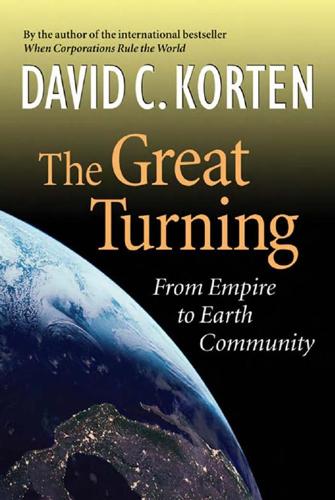
The Great Turning: From Empire to Earth Community
by
David C. Korten
Published 1 Jan 2001
They differ among themselves mainly on their views of the extent to which it is appropriate for government to subsidize private corporations or to provide safety nets to cushion the fall of the losers in the market’s relentless competition. Neoliberal Elitism Economist Milton Friedman, the leader of the Chicago school of monetary economics, and technological futurist George Gilder played leading roles in legitimating and popularizing the neoliberal story. They were favorites of President Ronald Reagan (1981–89), who presented both with presidential awards. Friedman’s most influential work, Capitalism and Freedom, first published in 1962, argues that individual freedom is the inviolate moral absolute of economic life and that it is best secured through markets that guarantee the freedom of persons of wealth to use their money and property in whatever way they consider most beneficial to their individual interest.
…
Chapter 14: Prisons of the Mind 1. Willis W. Harman, Global Mind Change: The Promise of the 21st Century, 2nd ed. (Sausalito, CA: Institute of Noetic Sciences, and San Francisco: Berrett-Koehler, 1998), viii. 2. Milton Friedman, Capitalism and Freedom (Chicago: University of Chicago Press, 2002), 120. 3. Ibid., 115–17. 4. George Gilder, Wealth and Poverty, new ed. (San Francisco: ICS Press, 1993), 40. PART IV: The Great Turning Introduction 1. Matthew Fox, Wrestling with the Prophets: Essays on Creation Spirituality and Everyday Life (New York: Penguin Group), 76. Chapter 15: Beyond Strict Father versus Aging Clock 1. Thomas Berry, Dream of the Earth (San Francisco: Sierra Club Books, 1988), xi. 2.
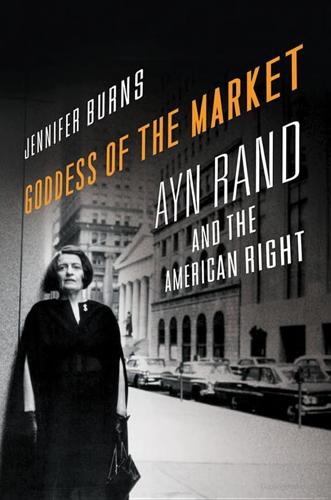
Goddess of the Market: Ayn Rand and the American Right
by
Jennifer Burns
Published 18 Oct 2009
“Ayn Rand is dead. So, incidentally, is the philosophy she sought to launch dead; it died still born,” William F. Buckley Jr. announced in a mean-spirited obituary that once again set the letters column of National Review abuzz. Buckley’s dismissal of Rand was overconfident by any standard. Only a year before, George Gilder had recognized Rand as an important influence in Wealth and Poverty, a book soon known as the bible of the Reagan administration. Two years after her death another of her admirers, Charles Murray, would light the conservative world aflame with his attack on welfare, Losing Ground. Along with A Time for Truth, written by former Treasury Secretary William Simon and former Collective member Edith Efron, these books suggested that Rand’s influence was just beginning to be felt in policy circles.
…
Barbara Branden, The Passion of Ayn Rand (New York: Random House, 1986), 396–400; Nathaniel Branden, My Years with Ayn Rand (San Francisco: Jossey Bass, 1999), 391–402. 76. Cynthia Peikoff interview for “Sense of Life,” December 2, 1994, documentary outtakes, ARP. Epilogue 1. William F. Buckley Jr., “Ayn Rand: RIP,” National Review, April 2, 1982, 380; George Gilder, Wealth and Poverty (New York: Basic Books, 1981); Charles Murray, Losing Ground: American Social Policy, 1950–1980 (New York: Basic Books, 1984); William Simon, A Time for Truth (New York: McGrawReader’s Digest Press, 1978); Maureen Dowd, “Where Atlas Shrugged Is Still Read—Forthrightly,” New York Times, September 13, 1987. 2.
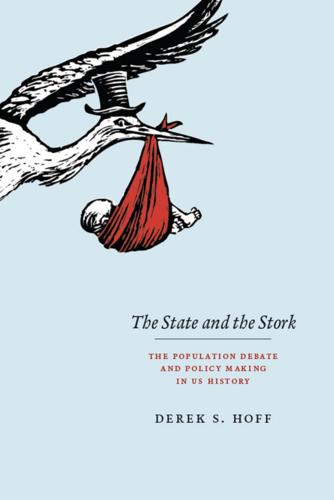
The State and the Stork: The Population Debate and Policy Making in US History
by
Derek S. Hoff
Published 30 May 2012
(Reagan spoke the language of overpopulation in the 1960s, but, like so many conservatives, subsequently switched to the anti-Malthusian camp.)53 Simon also had links to such futurists as Herman Kahn, with whom he edited a book espousing the resourceoptimism position.54 By the 1980s, Simon’s ideas had become ingrained in the philosophy of leading conservative intellectuals. For instance, activist George Gilder summed up the new conservative mantra regarding population aged 229 population and the limits to growth in his well-known Wealth and Poverty (1981). After criticizing the population scare and what he saw as the fantasy that resources can run out, Gilder proffered, “Our greatest and only resource is the miracle of human creativity in a relation of openness to the divine.”55 Simon and other market-knows-best demographers provided a necessary corrective to the excessive rhetoric of the zero population growth movement (which takes nothing away from the thinking of serious ecological economists such as Herman Daly).
…
The letter from Hayek to Simon, March 22, 1981, is reprinted in Simon, A Life Against the Grain, 268. 53. For Reagan and population, see Robertson, Malthusian Moment, chap. 9. 54. Julian L. Simon and Herman Kahn, eds., The Resourceful Earth: A Response to Global 2000 (New York: Basil Blackwell, 1984). 55. George Gilder, Wealth and Poverty (New York: Basic Books, 1981), 268. 56. Central Intelligence Agency, Directorate of Intelligence, Office of Political Research, “Potential Implications of Trends in World Population, Food Production, and Climate,” August 1974, chap. 4. Also see Jack Parsons, Population Fallacies (London: Elek/Pemberton, 1977), 35. 57.

Utopia for Realists: The Case for a Universal Basic Income, Open Borders, and a 15-Hour Workweek
by
Rutger Bregman
Published 13 Sep 2014
Even a century and a half after the fatal report, the Speenhamland myth was still alive and kicking. When Nixon’s bill foundered in the Senate, conservative thinkers began lambasting the welfare state, using the very same misguided arguments applied back in 1834. These arguments echoed in Wealth and Poverty, the 1981 megabestseller by George Gilder that would make him Reagan’s most cited author and which characterized poverty as a moral problem rooted in laziness and vice. And they appeared again a few years later in Losing Ground, an influential book in which the conservative sociologist Charles Murray recycled the Speenhamland myth.24 Government support, he wrote, would only undermine the sexual morals and work ethic of the poor.

A Mathematician Plays the Stock Market
by
John Allen Paulos
Published 1 Jan 2003
Today, of course, WorldCom is synonymous with business fraud, but in the halcyon late 1990s it seemed an irrepressibly successful devourer of high-tech telecommunications companies. Bernie Ebbers, the founder and former CEO, is now viewed by many as a pirate, but then he was seen as a swashbuckler. I had read about the company, knew that high-tech guru George Gilder had been long and fervently singing its praises, and was aware that among its holdings were MCI, the huge long-distance telephone company, and UUNet, the “backbone” of the Internet. I spend a lot of time on the net (home is where you hang your @) so I found Gilder’s lyrical writings on the “telecosm” and the glories of unlimited bandwidth particularly seductive.
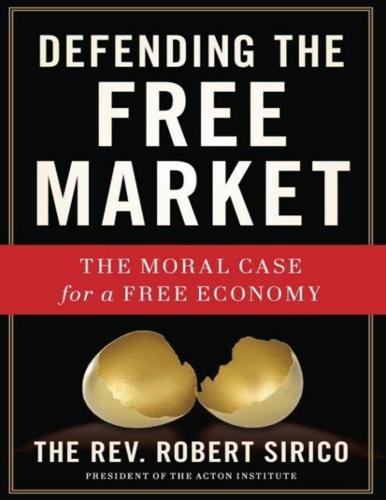
Defending the Free Market: The Moral Case for a Free Economy
by
Robert A. Sirico
Published 20 May 2012
—Chuck Colson, founder of Prison Fellowship® and the Colson Center for Christian Worldview “Defending the Free Market addresses the morality of entrepreneurship from the point of view of a sophisticated economist who is also an inspiring theologian, leading us on a journey to the free and virtuous society, animated by human creativity in the image of the Creator.” —George Gilder, author of Wealth and Poverty “As Father Sirico so rightly points out, no other system in history has lifted more people out of abject poverty than capitalism, but capitalism without a moral compass leads to a system and a society lost in the wilderness. Defending the Free Market reminds us of the moral responsibility of freedom and provides the perspective to see beyond our immediate goals and desires into the type of future we envision for our children and our nation.”
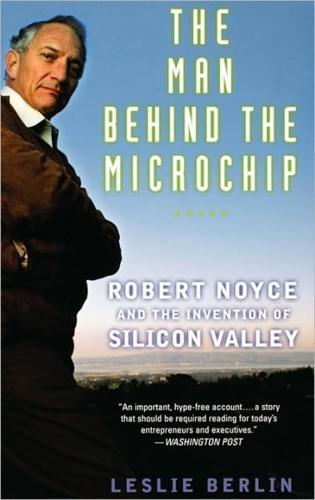
The Man Behind the Microchip: Robert Noyce and the Invention of Silicon Valley
by
Leslie Berlin
Published 9 Jun 2005
CBS anchor Charles Osgood called Noyce “the man who changed the world.” Tom Wolfe, who knew a hero when he saw one, wrote about Noyce in a 1983 Esquire article that ran next to pieces on other “American Originals,” including Jackie Robinson, John F. Kennedy, Betty Friedan, Walt Disney, and Elvis Presley. Futurist George Gilder called Robert Noyce “undoubtedly the most important American of the postwar era,” while Isaac Asimov went even further by hailing the invention of the integrated circuit as “the most important moment since man emerged as a life form.”9 And yet until now the story of Robert Noyce has not been told in full.
…
Thomas Edison and Henry Ford: “Remembering Bob Noyce: A Special Tribute,” four-page insert to San Jose Mercury News, 17 June 1990. Man who changed the world: “Osgood Files” [video], ASB. Tom Wolfe wrote about Noyce: Tom Wolfe, “The Tinkerings of Robert Noyce: How the Sun Rose on Silicon Valley,” Esquire, Dec. 1983, 346–74. Most important American: George Gilder quoted in the internal Intel publication Inteleads, July 1990, IA. Most important moment: Isaac Asmiov quoted in Miller Bonner, W. Lane Boyd, and Janet A. Allen, “Robert N. Noyce, 1927–1990,” commemorative brochure internally published by SEMATECH, ST. 10. Roots are important: Noyce’s contribution to the Grinnell High School Class of 1945’s fortieth reunion booklet, courtesy Robert Kaloupek.
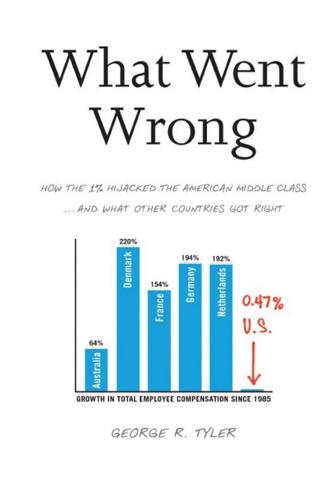
What Went Wrong: How the 1% Hijacked the American Middle Class . . . And What Other Countries Got Right
by
George R. Tyler
Published 15 Jul 2013
“Federal dollars spent should be paid for out of revenue [but] … the taxing rule was eliminated in the early 1980’s by the jihad prayers of supply-side economists.”5 The notion that tax cuts work this way has been discredited time and again by US economic history; only a John Law would argue that cutting tax rates from, say, 30 percent to 15 percent will spark a sufficient boom to replace the lost tax revenue. Early acolytes brought a religious fervor, making George Gilder’s 1981 Wealth and Poverty a best-seller; media evangelist Pat Robertson argued that supply-side economics “was the first truly divine theory of money creation.”6 President Reagan himself was indifferent about whether this canard was accurate because, as former Republican US Senator Bob Packwood of Oregon explained, Reagan “wanted lower rates and didn’t care how we got there.”7 The lower taxes he and the Bush presidents implemented have not produced an economic renaissance, however, only deep national debt and a nation that consumes too much and invests too little.
…
CHAPTER 12 1 Louis Uchitelle, “Fed Fears Wage Spiral That Is Little in Evidence,” New York Times, Aug. 1, 2008. 2 David Frum, “The Vanishing Republican Voters,” New York Times, Aug. 5, 2008. 3 Larry M. Bartels, Unequal Democracy (Princeton, NJ: Princeton University Press, 2008), 296–97. 4 See Timothy H. Parsons, The Rule of Empires, 36. 5 Peter G. Peterson, “The Morning After.” 6 George Gilder, Wealth and Poverty (1981; out of print), and David Graeber, Debt (Brooklyn, NY: Melville House, 2011), 377–78. 7 Albert Hunt, “Reagan Offers Lesson for Obama on Tax,” Sydney Morning Herald, Jan. 10, 2011. 8 Steven Mufson and Jia Lynn Yang, “Tax Policy Feeds Gap Between Rich, Poor,” Washington Post, Sept. 12, 2011. 9 Bruce Bartlett, “The Fiscal Legacy of George W.

The Power Law: Venture Capital and the Making of the New Future
by
Sebastian Mallaby
Published 1 Feb 2022
BACK TO NOTE REFERENCE 12 Accel closed its Princeton office in 1997. BACK TO NOTE REFERENCE 13 Accel Telecom Fund offering document, 1985, Jim Swartz personal files. I am grateful to Swartz for access to his papers and for multiple conversations. BACK TO NOTE REFERENCE 14 One year George Gilder wowed Accel’s guests by predicting that telephony would abandon its wired infrastructure in favor of cordless connections while TV would do the opposite, switching from wireless broadcast to internet cables. Swartz, interview by the author, Nov. 8, 2017. BACK TO NOTE REFERENCE 15 Swartz, author interview.
…
BACK TO NOTE REFERENCE 61 Jared Sandberg, “The Rumpled Genius Behind Netscape,” Globe and Mail, Aug. 14, 1995. BACK TO NOTE REFERENCE 62 Jim Clark, Netscape Time: The Making of the Billion-Dollar Start-Up That Took On Microsoft, with Owen Edwards (New York: St. Martin’s Griffin, 2000), 40–42. See also George Gilder, “The Coming Software Shift,” Forbes, Aug. 28, 1995. BACK TO NOTE REFERENCE 63 Clark, Netscape Time, 58. BACK TO NOTE REFERENCE 64 In reality, Clark had been treated somewhat roughly, but not as roughly as he thought: T. J. Rodgers, the superstar founder of Cypress Semiconductor, had likewise owned only 3.1 percent of his company when it had gone public in 1986, because semiconductor companies require a huge amount of capital to get started.
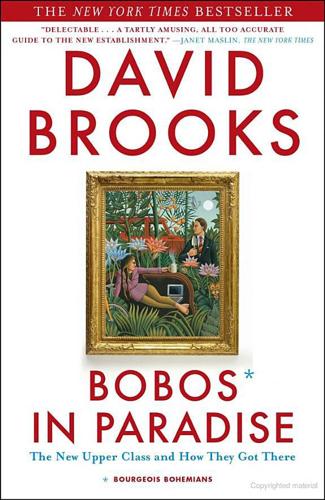
Bobos in Paradise: The New Upper Class and How They Got There
by
David Brooks
Published 1 Jan 2000
Old family structures began to seem passé. Old systems of etiquette seemed positively Neanderthal. Reticence seemed like hypocrisy. Sexual freedom, at least in the realm of public discourse, was on the march. Indeed, some social critics believe the sexual revolution continues unabated to this day. In 1995 George Gilder wrote, “Bohemian values have come to prevail over bourgeois virtue in sexual morals and family roles, arts and letters, bureaucracies and universities, popular culture and public life. As a result, culture and family life are widely in chaos, cities seethe with venereal plagues, schools and colleges fall to obscurantism and propaganda, the courts are a carnival of pettifoggery.”
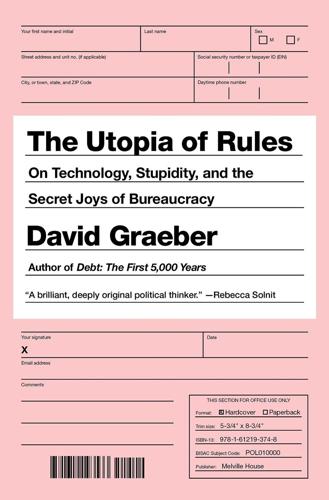
Bureaucracy
by
David Graeber
Published 3 Feb 2015
But he shared the same feeling that technology was leading humans to the brink of a great historical break, the same fear of social breakdown, and, for that matter, the same obsession with the need to preserve the sacred role of motherhood—Comte wanted to put the image of a pregnant woman on the flag of his religious movement. Gingrich did have another guru who was overtly religious: George Gilder, a libertarian theologian, and author, among other things, of a newsletter called the “Gilder Technology Report.” Gilder was also obsessed with the relation of technology and social change, but in an odd way, he was far more optimistic. Embracing an even more radical version of Mandel’s Third Wave argument, he insisted that what we were seeing since the 1970s with the rise of computers was a veritable “overthrow of matter.”

A Brief History of Neoliberalism
by
David Harvey
Published 2 Jan 1995
The more acceptable commonality to these arguments was that government intervention was the problem rather than the solution, and that ‘a stable monetary policy, plus radical tax cuts in the top brackets, would produce a healthier economy’ by getting the incentives for entrepreneurial activity aligned correctly.25 The business press, with the Wall Street Journal very much in the lead, took up these ideas, becoming an open advocate for neoliberalization as the necessary solution to all economic ills. Popular currency was given to these ideas by prolific writers such as George Gilder (supported by think-tank funds), and the business schools that arose in prestigious universities such as Stanford and Harvard, generously funded by corporations and foundations, became centres of neoliberal orthodoxy from the very moment they opened. Charting the spread of ideas is always difficult, but by 1990 or so most economics departments in the major research universities as well as the business schools were dominated by neoliberal modes of thought.

Social Life of Information
by
John Seely Brown
and
Paul Duguid
Published 2 Feb 2000
Readers of Toffler's (1980) Third Wave will recognize the first three terms here, particularly the first, demassification, to which Toffler adds three subtypes: demassification of media, production, and society. Notions of disintermediation and decentralization are features, for example, in the work of George Gilder or Kevin Kelly's (1997) writing on the "new economy." There are more "Ds" that could be added, such as Kevin Kelly's displacement and devolution. 22. Downes and Mui, 1998. 23. Coase, 1937. Coase's theory should be seen not so much as an attack on neoclassical individualism as an attempt to save it from itself.
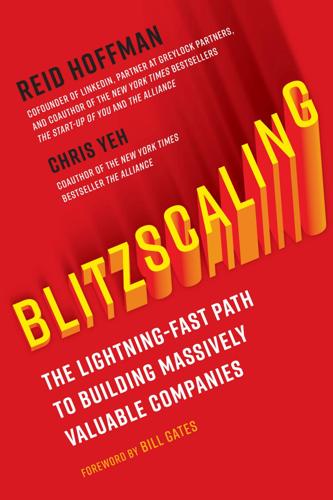
Blitzscaling: The Lightning-Fast Path to Building Massively Valuable Companies
by
Reid Hoffman
and
Chris Yeh
Published 14 Apr 2018
You can iterate more quickly on software products (many Internet companies release new software daily) than on physical products, making it faster and cheaper to achieve product/market fit. And bits-based businesses, as we saw with WhatsApp, can get away with far fewer employees than most of their atom-based counterparts. Back in 1990, the futurist George Gilder demonstrated his prescience when he wrote in his book Microcosm, “The central event of the twentieth century is the overthrow of matter. In technology, economics, and the politics of nations, wealth in the form of physical resources is steadily declining in value and significance. The powers of mind are everywhere ascendant over the brute force of things.”
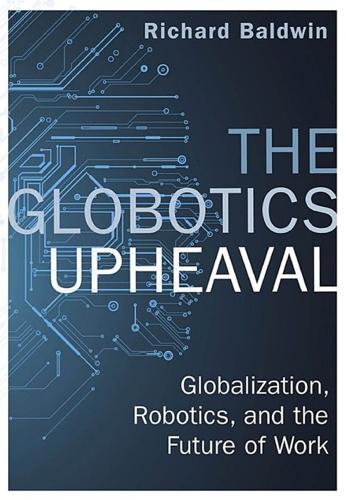
The Globotics Upheaval: Globalisation, Robotics and the Future of Work
by
Richard Baldwin
Published 10 Jan 2019
And all this for a chip that makes machine learning about twelve times faster. The reason such sums make sense is that the demand for faster chips is growing equally fast. That, ultimately, is why Moore’s Law continues to bind—people are still making money selling faster chips. Gilder’s Law As with Gordon Moore, there is a strange parallel between George Gilder the man and the law he named after himself. In 1989, Glider predicted that data transmission rates would grow three times faster than computer power. This prediction went through a massive hype cycle—a bit like Gilder himself. The two stories are surprisingly intertwined. The technology breakthrough that triggered the hype cycle was the commercial viability of fiber optic cables.

After the Gig: How the Sharing Economy Got Hijacked and How to Win It Back
by
Juliet Schor
,
William Attwood-Charles
and
Mehmet Cansoy
Published 15 Mar 2020
Joining “the free-wheeling spirit” of hippies with the “entrepreneurial zeal” of yuppies is from Barbrook and Cameron (1996, 1). 14. See Frank (2000, xiv, xii). 15. Turner (2006, 194). 16. It may seem curious that counterculturalists who came originally from the left, and who cared deeply about hierarchy and oppression, would make common cause with far-right figures such as Newt Gingrich and George Gilder, especially because the GOP is socially repressive and the party most associated with race and gender domination. But the combination of technophilia and their long-standing critique of the state led cyberutopians into the neoliberal camp. These contradictions can be seen in the personal biographies of leading figures, such as Mitch Kapor, an early open-source advocate and cofounder of the Electronic Freedom Foundation.
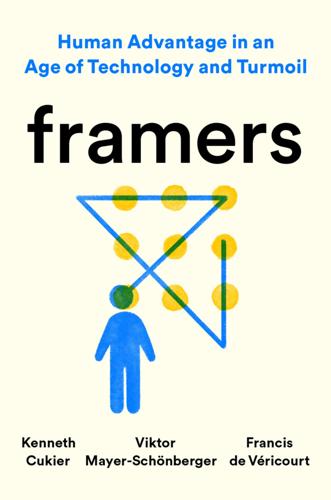
Framers: Human Advantage in an Age of Technology and Turmoil
by
Kenneth Cukier
,
Viktor Mayer-Schönberger
and
Francis de Véricourt
Published 10 May 2021
Ones are on display at the British Science Museum and the University of Cambridge. On Andrew Lo and economics: Andrew W. Lo, Adaptive Markets: Financial Evolution at the Speed of Thought (Princeton, NJ: Princeton University Press, 2017). Reframing the economy: For a fascinating reframing of economics through the lens of Claude Shannon’s information theory, see: George Gilder, Knowledge and Power: The Information Theory of Capitalism and How It Is Revolutionizing our World (Washington, DC: Regnery, 2013). The idea of a “circular economy” is another example, viewing products in terms of a life cycle. On being open-minded and curious: A good resource is David Epstein, Range: Why Generalists Triumph in a Specialized World (New York: Riverhead, 2019).

Road to Nowhere: What Silicon Valley Gets Wrong About the Future of Transportation
by
Paris Marx
Published 4 Jul 2022
Louis Rossetto, one of the magazine’s founders, “saw the digital revolution as an extension of a long-standing, if not widely acknowledged, American libertarian tradition,” and under Kelly’s direction, writers “utilized the computational metaphors and universal rhetoric of cybernetics to depict New Right politicians, telecommunications CEOs, information pundits, and members of … Whole Earth–connected organizations as a single, leading edge of countercultural revolution.”25 As a result, Wired’s pages served as a meeting place for the tech industry and the socially conservative Republicans who shared their desire for an internet free of government control or regulation. After it was founded in 1993, the magazine engaged in “a cycle of mutual legitimation” with the ascendant Christian right wing, placing figures such as Newt Gingrich and anti-evolution telecommunications analyst George Gilder on its cover.26 As it declared Gingrich a “wired” politician, it also helped to legitimize calls for tax cuts, deregulation, and an embrace of a more “flexible” work culture, while imbuing the so-called “New Right” of the Republican Party with the countercultural ethos. As deindustrialization and globalization sent more jobs overseas, the push for project-based work that was in line with the long-standing libertarian opposition to the hierarchal corporate management structure continued.

The Wealth of Networks: How Social Production Transforms Markets and Freedom
by
Yochai Benkler
Published 14 May 2006
For an excellent overview of the intellectual history of this debate and a contribution to the institutional design necessary to make space for this change, see Kevin Werbach, "Supercommons: Towards a Unified Theory of Wireless Communication," Texas Law Review 82 (2004): 863. The policy implications of computationally intensive radios using wide bands were first raised by George Gilder in "The New Rule of the Wireless," Forbes ASAP, March 29, 1993, and Paul Baran, "Visions of the 21st Century Communications: Is the Shortage of Radio Spectrum for Broadband Networks of the Future a Self Made Problem?" (keynote talk transcript, 8th Annual Conference on Next Generation Networks, Washington, DC, November 9, 1994).
…
For an excellent overview of the intellectual history of this debate and a contribution to the institutional design necessary to make space for this change, see Kevin Werbach, "Supercommons: Towards a Unified Theory of Wireless Communication," Texas Law Review 82 (2004): 863. The policy implications of computationally intensive radios using wide bands were first raised by George Gilder in "The New Rule of the Wireless," Forbes ASAP, March 29, 1993, and Paul Baran, "Visions of the 21st Century Communications: Is the Shortage of Radio Spectrum for Broadband Networks of the Future a Self Made Problem?" (keynote talk transcript, 8th Annual Conference on Next Generation Networks, Washington, DC, November 9, 1994).
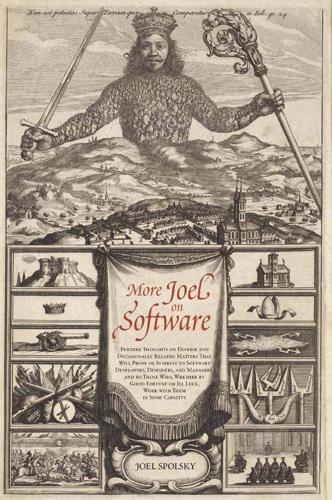
More Joel on Software
by
Joel Spolsky
Published 25 Jun 2008
They launched their company with infinite VC in the days of hyper-Java hype, having lured the key developers from the Java team at Sun. They had a 260 More from Joel on Software CEO, Kim Polese, who was brilliant at public relations; when she was marketing Java, she had Danny Hillis making speeches about how Java was the next step in human evolution; George Gilder wrote these breathless articles about how Java was going to completely upturn the very nature of human civilization. Compared to Java, we were to believe, monotheism, for example, was just a wee blip. Polese is that good. So when Marimba Castanet launched, it probably had more unearned hype than any product in history, but the developers had only been working on it for a total of . . . four months.

The Power of Pull: How Small Moves, Smartly Made, Can Set Big Things in Motion
by
John Hagel Iii
and
John Seely Brown
Published 12 Apr 2010
Although the concept of packet switching as an alternative technology for communicating had emerged in the early 1960s, it was not until the mid-1970s that researchers began to define the TCP/IP standard (Transmission Control Protocol/Internet Protocol) that ultimately provided a foundation for connecting a wide variety of digital networks together. In parallel with this technological advance, significant innovations in optical-fiber technology led to the formulation of a “fiber law” by George Gilder, who observed that the number of bits that can be piped down a single optical fiber tends to double roughly every nine months, leading to corresponding increases in price performance over time. This performance trend has been driven by a variety of innovations involving the ability to send an increasing number of frequencies through a strand of fiber and to switch frequencies much more efficiently through photonic switching.
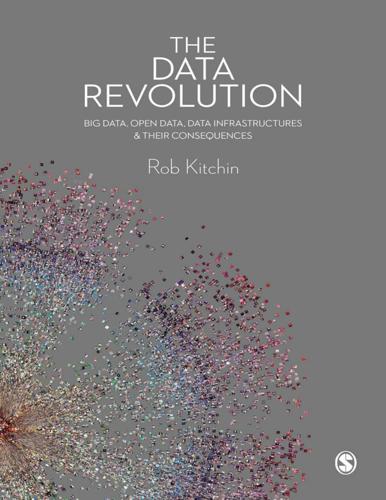
The Data Revolution: Big Data, Open Data, Data Infrastructures and Their Consequences
by
Rob Kitchin
Published 25 Aug 2014
In 1992, the World Wide Web was invented by Tim Berners-Lee at CERN, Geneva, producing a much more user-friendly way of accessing and using the Internet. Throughout the 1990s and 2000s, new networking technologies were developed such as near field and proximate communication with Bluetooth, local WiFi coverage, and national GSM/3G networks. According to George Gilder’s (2000) ‘law of telecosm’, the world’s supply of bandwidth (its capacity to transfer data) doubles roughly every six months, with much of the additional capacity provided through wireless networks. As a consequence of these developments, the linking of computational devices through the Internet has become increasingly easier, faster and more widely available.
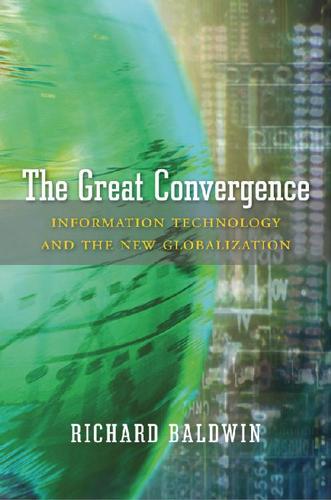
The Great Convergence: Information Technology and the New Globalization
by
Richard Baldwin
Published 14 Nov 2016
The law that impels the “I” in ICT is called Moore’s Law after its originator Gordon Moore. This law asserts that computing power grows exponentially—with, for example, computer chip performance doubling every eighteen months. The propulsion behind the “T” part is described by two laws: Gilder’s Law and Metcalfe’s Law. George Gilder observed that bandwidth grows three times more rapidly than computer power—doubling every six months. This allows transmission advances to help relax computing and storage constraints. Advances in data transmission, processing, and storage amplify each other. This is the economic basis of “the cloud” and its various uses.

The Chip: How Two Americans Invented the Microchip and Launched a Revolution
by
T. R. Reid
Published 18 Dec 2007
For those who want to know where the digital revolution is heading, Richard Turton’s The Quantum Dot (New York: Oxford University Press, 1995) offers a fairly technical description of how much further the integrated circuit can be integrated, and what technology is available when semiconductor chips are finally saturated. The economics of the digital future are pondered in interesting fashion by George Gilder in Microcosm: The Quantum Revolution in Economics and Technology (New York: Simon & Schuster, 1989). NOTES (Fuller publishing information appears in A Note about Sources.) Chapter 1: The Monolithic Idea honored in the textbooks: Cf. Jacob Millman, Microelectronics, p. xxii. willing to overlook: “The Nobel Prize in Physics, 2000,” Royal Swedish Academy of Sciences, Oct. 10, 2000.
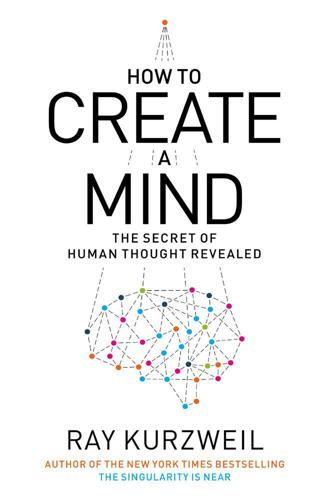
How to Create a Mind: The Secret of Human Thought Revealed
by
Ray Kurzweil
Published 13 Nov 2012
ACKNOWLEDGMENTS I’d like to express my gratitude to my wife, Sonya, for her loving patience through the vicissitudes of the creative process; To my children, Ethan and Amy; my daughter-in-law, Rebecca; my sister, Enid; and my new grandson, Leo, for their love and inspiration; To my mother, Hannah, for supporting my early ideas and inventions, which gave me the freedom to experiment at a young age, and for keeping my father alive during his long illness; To my longtime editor at Viking, Rick Kot, for his leadership, steady and insightful guidance, and expert editing; To Loretta Barrett, my literary agent for twenty years, for her astute and enthusiastic guidance; To Aaron Kleiner, my long-term business partner, for his devoted collaboration for the past forty years; To Amara Angelica for her devoted and exceptional research support; To Sarah Black for her outstanding research insights and ideas; To Laksman Frank for his excellent illustrations; To Sarah Reed for her enthusiastic organizational support; To Nanda Barker-Hook for her expert organization of my public events on this and other topics; To Amy Kurzweil for her guidance on the craft of writing; To Cindy Mason for her research support and ideas on AI and the mind-body connection; To Dileep George for his discerning ideas and insightful discussions by e-mail and otherwise; To Martine Rothblatt for her dedication to all of the technologies I discuss in the book and for our collaborations in developing technologies in these areas; To the KurzweilAI.net team, who provided significant research and logistical support for this project, including Aaron Kleiner, Amara Angelica, Bob Beal, Casey Beal, Celia Black-Brooks, Cindy Mason, Denise Scutellaro, Joan Walsh, Giulio Prisco, Ken Linde, Laksman Frank, Maria Ellis, Nanda Barker-Hook, Sandi Dube, Sarah Black, Sarah Brangan, and Sarah Reed; To the dedicated team at Viking Penguin for all of their thoughtful expertise, including Clare Ferraro (president), Carolyn Coleburn (director of publicity), Yen Cheong and Langan Kingsley (publicists), Nancy Sheppard (director of marketing), Bruce Giffords (production editor), Kyle Davis (editorial assistant), Fabiana Van Arsdell (production director), Roland Ottewell (copy editor), Daniel Lagin (designer), and Julia Thomas (jacket designer); To my colleagues at Singularity University for their ideas, enthusiasm, and entrepreneurial energy; To my colleagues who have provided inspired ideas reflected in this volume, including Barry Ptolemy, Ben Goertzel, David Dalrymple, Dileep George, Felicia Ptolemy, Francis Ganong, George Gilder, Larry Janowitch, Laura Deming, Lloyd Watts, Martine Rothblatt, Marvin Minsky, Mickey Singer, Peter Diamandis, Raj Reddy, Terry Grossman, Tomaso Poggio, and Vlad Sejnoha; To my peer expert readers, including Ben Goertzel, David Gamez, Dean Kamen, Dileep George, Douglas Katz, Harry George, Lloyd Watts, Martine Rothblatt, Marvin Minsky, Paul Linsay, Rafael Reif, Raj Reddy, Randal Koene, Dr.
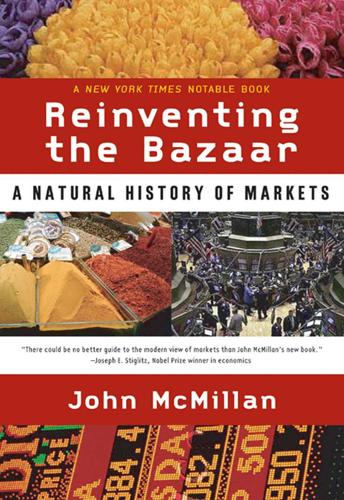
Reinventing the Bazaar: A Natural History of Markets
by
John McMillan
Published 1 Jan 2002
If no human planner is guiding the market to the optimal outcome, God must be. The invisible hand is the hand of God. A religious fervor characterizes some of today’s fans of the free market. “The true spirit capital of the current capitalist economy is not material. It is moral, intellectual, and spiritual,” declared George Gilder, an evangelist for libertarianism. He also said that entrepreneurship “most deeply springs from religious faith and culture” and that entrepreneurs “embody and fulfill the sweet and mysterious consolations of the Sermon on the Mount.” Ronald Reagan liked to use the catchphrase “the magic of the market”—inadvertently bearing out the jibes about his “voodoo economics.”

The Future of Money
by
Bernard Lietaer
Published 28 Apr 2013
Named after the President of Intel, 'Moore's law' actually describes an even more impressive rate: every 18 months, computational speed doubles and the price drops by half. Just one facet of it - the Internet - is the topic of an estimated 12,000 articles per month in the US press alone, and this does not even include what is written about the Internet on the Internet. Never before has any technological shift been heralded by such an information avalanche. George Gilder calls it 'the biggest technological juggernaut that ever rolled'. Bill Gates claims that 'the benefits and problems arising from the Internet Revolution will be much greater than those brought about by the PC revolution'. It is worth repeating that what drives the change are the gigantic falls in costs and speed not only in computer chips but also in communications in general (see sidebar).
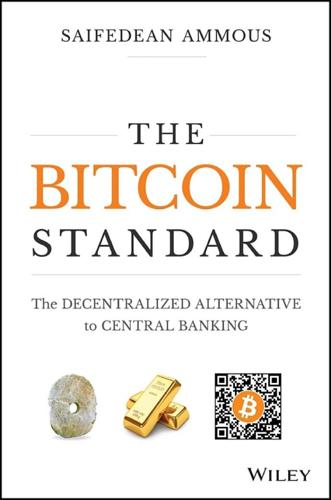
The Bitcoin Standard: The Decentralized Alternative to Central Banking
by
Saifedean Ammous
Published 23 Mar 2018
Reading Hayek's Monetary Theory and the Trade Cycle, from 1933, or Rothbard's America's Great Depression, from 1963, is sufficient. 9 Ludwig von Mises, Human Action, p. 560. 10 Friedrich Hayek, A Tiger by the Tail, p. 126. 11 A highly recommended historical account of the disastrous and yet grimly hilarious consequences of price controls across history is Forty Centuries of Price and Wage Controls: How Not to Fight Inflation, by Robert Schuettinger and Eamonn Butler. 12 Source: Federal Reserve Economic Data, available at https://fred.stlouisfed.org 13 See Table 10 on p. 206 of the Friedman and Schwartz book. 14 Murray Rothbard, America's Great Depression, 5th ed., p. 186. 15 An excellent detailed treatment of this depression is found in James Grant's book, The Forgotten Depression: 1921: The Crash That Cured Itself (Simon & Schuster, 2014). 16 Murray Rothbard, America's Great Depression. 17 “Fisher Sees Stocks Permanently High,” New York Times, October 16, 1929, p. 8. 18 See Murray Rothbard, Economic Depressions: Their Cause and Cure (2009). 19 Friedrich Hayek, Denationalization of Money (1976). 20 Bank of International Settlements (2016), Triennial Central Bank Survey. Foreign Exchange Turnover in April 2016. 21 For more on this, see George Gilder, The Scandal of Money: Why Wall Street Recovers but the Economy Never Does (Washington, D.C. Regnery, 2016). 22 Hans‐Hermann Hoppe, “How Is Fiat Money Possible?” The Review of Austrian Economics, vol. 7, no. 2 (1994). Chapter 7 Sound Money and Individual Freedom “[G]overnments believe that … when there is a choice between an unpopular tax and a very popular expenditure, there is a way out for them—the way toward inflation.
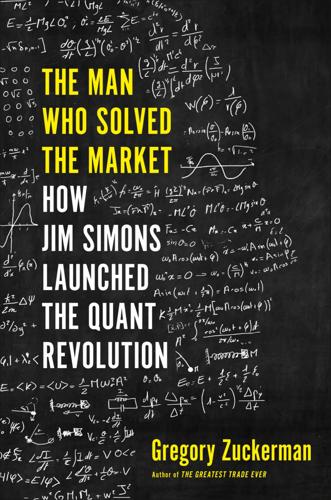
The Man Who Solved the Market: How Jim Simons Launched the Quant Revolution
by
Gregory Zuckerman
Published 5 Nov 2019
Lux, “The Secret World of Jim Simons.” 3. Abuse of Structured Financial Products (statement of Peter Brown). 4. Katherine Burton, “Inside a Moneymaking Machine Like No Other,” Bloomberg, November 21, 2016, https://www.bloomberg.com/news/articles/2016-11-21/how-renaissance-s-medallion-fund-became-finance-s-blackest-box. 5. George Gilder, Life after Google: The Fall of Big Data and the Rise of the Blockchain Economy (Washington, DC: Regnery Gateway, 2018). 6. Simon Van Zuylen-Wood, “The Controversial David Magerman,” Philadelphia Magazine, September 13, 2013, https://www.phillymag.com/news/2013/09/13/controversial-david-magerman. 7.
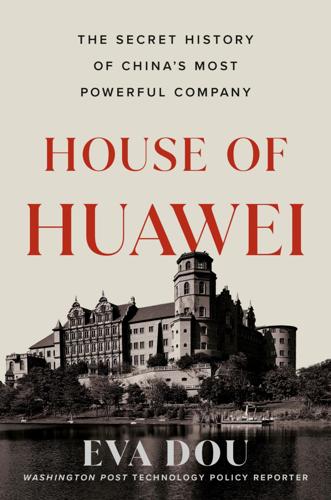
House of Huawei: The Secret History of China's Most Powerful Company
by
Eva Dou
Published 14 Jan 2025
I’m deeply grateful to all the telecommunications engineers, executives, government officials, and subject-matter experts who opened up their memories and generously shared their stores of knowledge, insights, and opinions. They include Erdal Arıkan, Christoph Becker, John Bolton, Vince Cable, Duncan Clark, Robert Fox, Gary Garner, George Gilder, Dan Hesse, Dan Hutchison, Michael Joseph, Michel Juneau-Katsuya, Andy Keiser, John Kotter, Michael Kovrig, Keith Krach, Tony Kwong, Richard Kurland, James Lewis, Dongqing Li, Graham Lovelace, Edgar Masri, Simon Murray, Riccardo Nanni, Bill Owens, Jake Parker, Vishu Paul, William Plummer, Chris Powell, Robert Read, Diane Rinaldo, Charles Rollet, Guy Saint-Jacques, Brian Shields, Eric Steinmann, John Strand, Leo Strawczynski, Niels ten Oever, Michael Thelander, Jeffrey Towson, Paul Triolo, John F.
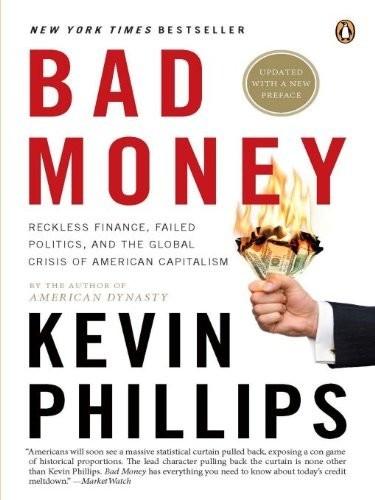
Bad Money: Reckless Finance, Failed Politics, and the Global Crisis of American Capitalism
by
Kevin Phillips
Published 31 Mar 2008
—Gideon Rachman, Financial Times, November 2007 Looking back a decade, we can now understand that a perverse incarnation of millennial utopianism crested in a form that critics have since labeled “market triumphalism”—the belief that history was “ending” because near perfection had been achieved through the enthronement of English-speaking democratic capitalism. Smugness paraded across a bipartisan spectrum. Newt Gingrich, the Speaker of the U.S. House of Representatives, envisioned a politics in which major questions could be resolved by asking “our major multinational corporations for advice.” Technology guru George Gilder theologized that “it is the entrepreneurs who know the rules of the world and the laws of God.” Thomas Friedman, the New York Times columnist, enthused, “International finance has turned the world into a parliamentary system” that allows initiates “to vote every hour, every day through their mutual funds, their pension funds, their brokers.”
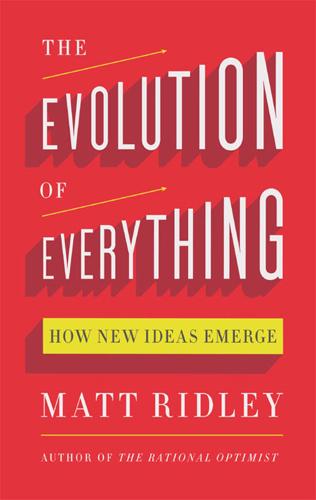
The Evolution of Everything: How New Ideas Emerge
by
Matt Ridley
So at least goes the conventional wisdom. The repeal of the Glass-Steagall Act (which separated banking and securities trading) in 1999 was the culmination of a decade of financial deregulation, according to this view. Like so much conventional wisdom, this is almost wholly wrong. As the author George Gilder comments, in the run-up to the crisis, ‘every large institution was thronged with examiners, overseers, supervisors, inspectors, monitors, compliance officers and a menagerie of other regulatory constabulary’. These invariably gave the institutions a clean bill of health right up till the moment they declared them in need of bail-out.

The Wrecking Crew: How Conservatives Rule
by
Thomas Frank
Published 5 Aug 2008
Jack Wheeler, erstwhile leader of the cult of the freedom fighter, discovered that the Internet was the weapon that would destroy the liberal state here at home.1 Leadership of the conservative movement passed from Pat Buchanan, warning darkly about the coming “New World Order,” to Newt Gingrich, extolling the coming Information Age and referring reporters to the glorious free-market future as revealed in The Third Wave. The most telling metamorphosis was that of the conservative writer George Gilder. Like so many others, Gilder started his career as a culture warrior, denouncing feminism as a mortal threat to civilization. In his 1981 best seller, Wealth and Poverty, he expanded the attack, describing poverty as a result of bad values and blaming society’s breakdown on permissive liberalism.

The Long Boom: A Vision for the Coming Age of Prosperity
by
Peter Schwartz
,
Peter Leyden
and
Joel Hyatt
Published 18 Oct 2000
Explains how the democratization of information, telecommunications, and finance have led to globalization. His thesis that the global economy's strength and impact will only grow in the decades ahead lays the groundwork for a discussion of a Long Boom future. Life After Television, The Coming "Transformation of Media and American Life, by George Gilder (New York: W. W. Norton, 1994). A good encapsulation of Gilder's core ideas. He has been way ahead of the curve in thinking through the inevitable consequences of the coming bandwidth bonanza. Lords of the Rim, by Sterling Seagrave (New York: Putnam, 1995). Talks at length about the role of the overseas Chinese in integrating the rest of Asia, particularly Southeast Asia, with mainland China.

Bank 3.0: Why Banking Is No Longer Somewhere You Go but Something You Do
by
Brett King
Published 26 Dec 2012
ETFs: Exchange-Traded Funds Facebook: A hugely popular online social network founded in 2004 for helping friends stay in touch and share information FAQ: Frequently Asked Questions—questions asked frequently by customers and put on the company’s website to expedite answers. FMCG: Fast-Moving Consumer Goods—products that are sold quickly at relatively low costs. Geolocation: The technique of identifying the geographical location of a person or device by means of digital information processed via the Internet. Gilder’s Law: Proposed by George Gilder, this law states that bandwidth grows at least three times faster than computer power. GPR prepaid cards: General Purpose Reloadable prepaid cards GPRS: General Packet Radio Switching—a packet-oriented mobile data service available to users of 2G and 3G cellular communication systems in Global Systems for Mobile Communications (GSM).
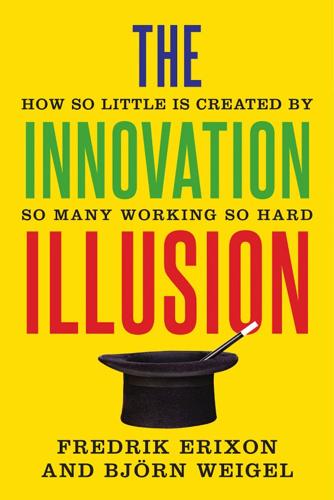
The Innovation Illusion: How So Little Is Created by So Many Working So Hard
by
Fredrik Erixon
and
Bjorn Weigel
Published 3 Oct 2016
Tech thinker Kevin Kelly has prophesied the rise of a new form of socialism as a consequence of unobstructed source technology and community-generated content.20 Capitalism is a highly adaptive creature, argues the contrarian economic reporter Paul Mason, but it is not going to survive the current revolution in information technology.21 Information, he argues, will destroy the price mechanism and new forms of collaborative production will do away with what is left of market capitalism. The passion for technological determinism also thrives on the other side of the ideological fence. “The Goliath of totalitarianism will be brought down by the David of the microchip,” mused conservative icon Ronald Reagan,22 who drew heavily from technology enthusiasts like George Gilder, an economist who later identified the billion-transistor chip as the cure to root out all economic evil.23 A British libertarian politician has predicted that the new digital age will be the end of politics.24 Neoconservatives similarly were quick to embrace the revolutionary promise of technology.

More Everything Forever: AI Overlords, Space Empires, and Silicon Valley's Crusade to Control the Fate of Humanity
by
Adam Becker
Published 14 Jun 2025
“We believe in the actual Scientific Method and enlightenment values of free discourse and challenging the authority of experts.” This is reflexive contrarianism as a virtue, trying to claim the mantle of science and the Enlightenment while saying that his ignorance is just as good as someone else’s knowledge.104 (Andreessen’s professed belief in science is especially rich given that he includes George Gilder, a creationist, on his list of “Patron Saints of Techno-Optimism.”) And just in case it wasn’t clear, Andreessen wants everyone to know that he isn’t resentful—not in the least. He is careful to reassure his readers that “we believe in an absolute rejection of resentment.”105 A powerful billionaire criticizing experts as disconnected and unaccountable is an astonishing feat of projection.
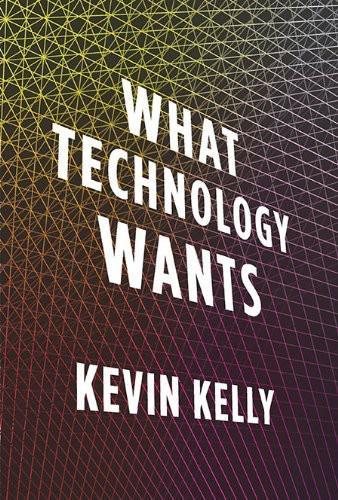
What Technology Wants
by
Kevin Kelly
Published 14 Jul 2010
pressrelease.id=96. 332 hundreds of exabytes of real-life data: John Gantz, David Reinsel, et al. (2007) “The Expanding Digital Universe: A Forecast of Worldwide Information Growth Through 2010.” http://www.emc.com/collateral/analyst-reports/expanding-digitalidc-white-paper. pdf. 334 by a few million bits: Stephen Hawking. (1996) “Life in the Universe.” http://hawking.org.uk/index.php?option=com_content& view=article&id=65. 334 new information to the technium each year: Bret Swanson and George Gilder. (2008) “Estimating the Exaflood.” Discovery Institute. http://www.discovery.org/a/4428. 334 an exponential curve for over 100 years: Andrew Odlyzko. (2000) “The History of Communications and Its Implications for the Internet.” SSRN eLibrary. http://papers.ssrn.com/sol3/papers.cfm?abstract_id=235284. 335 when science began: Derek Price. (1965) Little Science, Big Science.

Culture and Prosperity: The Truth About Markets - Why Some Nations Are Rich but Most Remain Poor
by
John Kay
Published 24 May 2004
The central message-that economics provides at best little support for conventional political wisdom about market efficiency and the simplifications of the American business model-was lost. Stiglitz was cheered by anti globalization protesters with little appreciation of what the argument was really about. The stock market bubble confronted economists with different challenges. The public debate was dominated by pundits: George Gilder of Forbes ASAP, Kevin Kelly of Wired and New Rules for the New Economy) James Glassman and Kevin Hassett of Dow 36)000. These people were not credentialed economists, but they announced the irrelevance of traditional principles of business economics and market valuation in the face of new technology and a changed political environment.
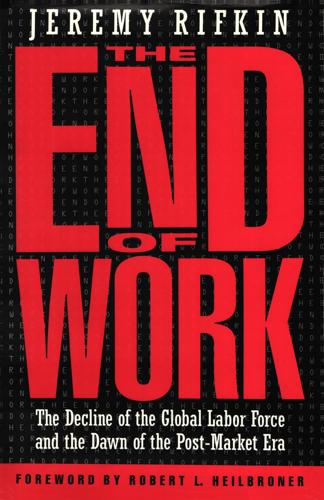
The End of Work
by
Jeremy Rifkin
Published 28 Dec 1994
Alperovitz acknowledges that while "such a policy has many expert advocates, it has little political feasibility at the moment."78 Despite mounting evidence of the destabilizing impacts of the new high-technology revolution, government leaders continue to champion the idea of trickle-down technology, believing, against all 40 THE TWO FACES OF TECHNOLOGY evidence to the contrary, that technological innovations, advances in productivity, and falling prices will generate sufficient demand and lead to the creation of more new jobs than are lost. During the ReaganBush era, supply-side economists like George Gilder and David Stockman were quick to embrace the concept of trickle-down technology, arguing that the key to growth lay in policies designed to stimulate production. In 1987 The National Academy of Sciences issued a report on the future of "Technology and Employment," reiterating the trickle-down arguments.
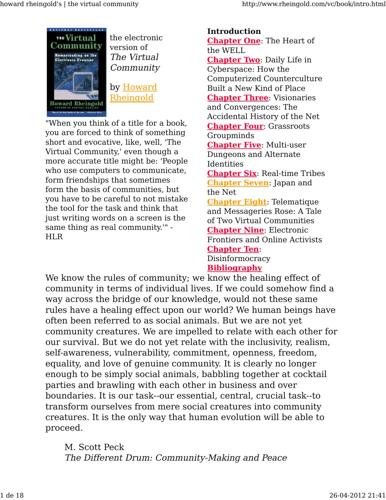
Howard Rheingold
by
The Virtual Community Homesteading on the Electronic Frontier-Perseus Books (1993)
Published 26 Apr 2012
In the private sector, telecommunication companies, television networks, computer companies, cable companies, and newspapers 26-04-2012 21:41 howard rheingold's | the virtual community 13 de 18 http://www.rheingold.com/vc/book/intro.html in the United States, Europe, and Japan are jockeying for position in the nascent "home interactive information services industry." Corporations are investing hundreds of millions of dollars in the infrastructure for new media they hope will make them billions of dollars. Every flavor of technological futurist, from Alvin Toffler and John Naisbitt to Peter Drucker and George Gilder, base utopian hopes on "the information age" as a techno-fix for social problems. Yet little is known about the impact these newest media might have on our daily lives, our minds, our families, even the future of democracy. CMC has the potential to change our lives on three different, but strongly interinfluential, levels.
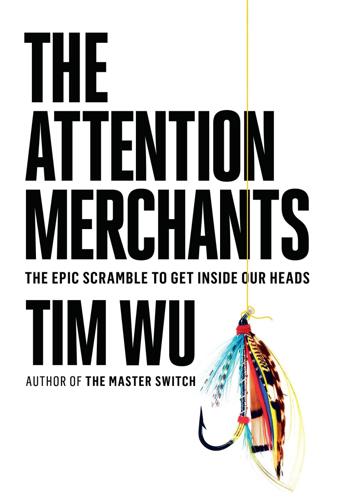
The Attention Merchants: The Epic Scramble to Get Inside Our Heads
by
Tim Wu
Published 14 May 2016
Television, the idiot box, the dreaded “unity machine,” the reviled “boob tube,” was declared by the smart money to be dead meat in the twenty-first century, destined perhaps to survive out of sheer inertia serving the poor and elderly shut-ins but eventually to go the way of the typewriter or horse and buggy. Always ahead of everyone in being wrong, the futurist George Gilder had published a book in 1990 entitled Life After Television. By 2007, even Damon Lindelof, co-creator of the hit series Lost, was boldly ready to wrongly proclaim that “television is dying.”4 Many of the cable networks suffered from disenchantment caused by the slow surrender to pointless spectacle and inane personality.

Jihad vs. McWorld: Terrorism's Challenge to Democracy
by
Benjamin Barber
Published 20 Apr 2010
Wriston, who is the former chairman of Citicorp, is a little too much of a technological Pangloss, however, and his tendency to think it will all turn out in the end, as long as we recognize the new realities, detracts a little from his careful analysis of those realities. He relies heavily on earlier books on the information revolution and its effect on nationhood, like Ithiel de Sola Pool’s Technologies Without Boundaries (Cambridge: Harvard University Press, 1990); Peter Drucker’s The New Realities (New York: Harper & Row, 1989); and George Gilder’s Microcosm (New York: Simon & Schuster, 1989). An early study is F. A. Hayek’s Denationalisation of Money (London: Institute of Economic Affairs, 1976). 21. Former Secretary of State George Shultz as cited by Wriston, Twilight, p. 10. 22. The return of the Democratic Party to executive power in the United States thus changed nothing with respect to this market ideology.
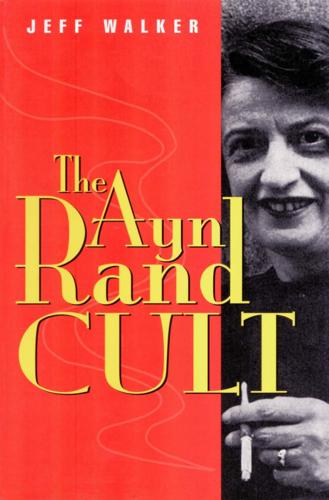
Ayn Rand Cult
by
Jeff Walker
Published 30 Dec 1998
On the other hand, the Stirnerian motto that “Nothing is higher for me than myself”—and here he most emphatically includes any doctrine that does not unreservedly serve even the most eccentric of one’s personal interests and whims—might have been helpful to Randians whose grim selfishness came to mean living a life that Rand, or Branden, or Peikoff, would approve of. Classical liberals since Adam Smith have taken for granted that the pursuit of self-interest, apart from being unavoidable, is also beneficial to everyone when there is competition. But they don’t share Rand’s rosy view of total selfishness. George Gilder suggests that selfishness, in the dictionary sense, leads to a desire for unearned benefits and to organized pressure on the state to provide them. Ryerson contends that “special favors sought from government by this or that business are driven by selfishness, by contempt for the common good, and are bad not because they fail to serve the selfishness of the beneficiary (which they obviously do), but because they distort fair conditions of business competition.”
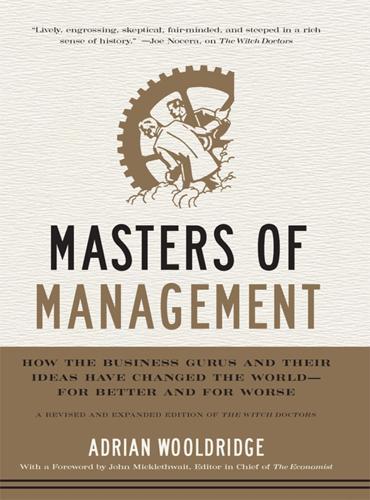
Masters of Management: How the Business Gurus and Their Ideas Have Changed the World—for Better and for Worse
by
Adrian Wooldridge
Published 29 Nov 2011
Jorma Ollila transformed Nokia, a long-established Finnish firm, from a maker of rubber boots and cables into a mobile-phone giant that is still, for all its current troubles, the world’s biggest producer of handsets. It would be perverse to exclude such men from the pantheon of entrepreneurs. The subject of entrepreneurship is befuddled by myths as well as befogged by linguistic confusion. One myth is that entrepreneurs are “orphans and outcasts,” to borrow George Gilder’s phrase: lonely Atlases battling a hostile world or antisocial geeks inventing world-changing gizmos in their fetid garrets. In fact, entrepreneurship, like all business, is a social activity. Entrepreneurs may be more inner-directed and self-obsessed than the usual corporate types, but they almost always require business partners and social networks in order to succeed.

Open: The Story of Human Progress
by
Johan Norberg
Published 14 Sep 2020
In the context of global markets, then, US entrepreneurs were of ‘minor and declining importance’, concluded the author, Charles Ferguson, and ‘only economists moved by the invisible hand have failed to apprehend the problem’.48 This is the technocratic impulse. We are in no mood for surprises because we know what the future is like, and we will carry you there. Such thinking usually fails because it is really the element of surprise that gives open societies the edge, as the American economist George Gilder argued in an exchange with Ferguson. America is still the home of tech, not France, and it happened because of chronic entrepreneurialism, not in spite of it. The China paradox Sometimes it sounds like market economies grew rich because they incentivized people to work and innovate, but that’s not the point.
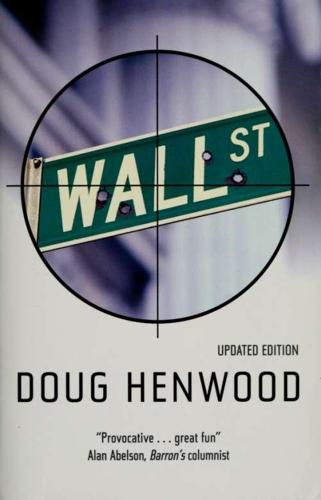
Wall Street: How It Works And for Whom
by
Doug Henwood
Published 30 Aug 1998
Money has now found its proper place, a place far more wondrous than the stock exchange: the orbit in which it rises and sets like some artificial sun. This isn't that surprising from a writer who can declare the Gulf War a media event. But it displays an understanding of finance apparently derived from capital's own publicists, like George Gilder, who celebrate the obsolescence of matter and the transcendence of all the old hostile relations of production. Cybertopians and other immaterialists are lost in a second- or even third-order fetishism, unable to decode the relations of power behind the disembodied ecstasies of computerized trading.
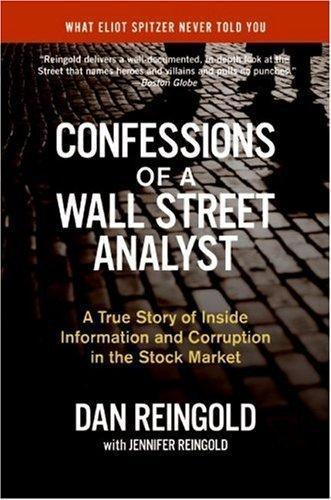
Confessions of a Wall Street Analyst: A True Story of Inside Information and Corruption in the Stock Market
by
Daniel Reingold
and
Jennifer Reingold
Published 1 Jan 2006
It took place at the Ritz-Carlton in Laguna Niguel, California, a gorgeous resort south of Los Angeles overlooking the ocean. But no one there cared much about the surf. The conference was chock-a-block with new companies trying to get funded, existing companies touting their technology, and, of course, bankers, analysts, and investors. The speakers included John Chambers, CEO of Cisco Systems, Internet guru George Gilder, and others. Frank Quattrone, tech banker extraordinaire, was there, mobbed by startups looking for funding or merger partners. Sol Trujillo, CEO of US West, was there, trying desperately to gain some credibility as he tried to transform his company, and himself, from a boring old Baby Bell into a “new-economy” superstar.

All the Money in the World
by
Peter W. Bernstein
Published 17 Dec 2008
Noyce, along with Moore, a gentle, self-effacing man who had an uncanny knack for backing promising research projects, left Fairchild in 1968 to found the Intel Corporation, one of the leading computer chip manufacturers in the world today. It was at Intel in late 197127 that Noyce and Moore upended the electronic industry once more, when their engineers invented the first microprocessor, an invention that futurist George Gilder has referred to as the most significant product of the second half of the twentieth century. It was the microprocessor, the so-called computer on a chip, which ushered in the age of the personal computer and transformed numerous other industries. Because of its diminutive size and its ability to carry out logic functions, the microprocessor could be used to automate processes in everything from television sets to automobiles.

Good Money: Birmingham Button Makers, the Royal Mint, and the Beginnings of Modern Coinage, 1775-1821
by
George Anthony Selgin
Published 13 Jul 2008
The resulting studies are widely distributed as books and other publications, and are publicly debated in numerous conference and media programs. Through this uncommon depth and clarity, the Independent Institute expands the frontiers of our knowledge, redefines the debate over public issues, and fosters new and effective directions for government reform. FOUNDER & PRESIDENT David J. Theroux George Gilder Nathan Rosenberg DISCOVERY INSTITUTE STANFORD UNIVERSITY Nathan Glazer Simon Rottenberg RESEARCH DIRECTOR HARVARD UNIVERSITY UNIVERSITY OF MASSACHUSETTS Alexander Tabarrok Ronald Hamowy SENIOR FELLOWS Bruce L. Benson Ivan Eland Robert Higgs Alvaro Vargas Llosa Charles V. Pena William F.

If Mayors Ruled the World: Dysfunctional Nations, Rising Cities
by
Benjamin R. Barber
Published 5 Nov 2013
“Cities do not depend on the entire nation state for their growth” although “neither do they exist on their own here—they depend on surrounding regions.”10 No one since Jane Jacobs has made the argument for creative invention as an engine of urban growth and reform as compellingly (and controversially) as Richard Florida, with his focus on the captivating notion of the creative class. “Urban centers,” he writes, “have long been crucibles for innovation and creativity. Now they are coming back. Their turnaround is driven in large measure by the attitudes and location choices of the Creative Class.”11 Citing George Gilder, Florida recognizes that traditional big cities may reflect “leftover baggage from the industrial era.” They create conditions of stagnation and economic suburbanization (sprawl), and they encourage the development of so-called edge cities that actually undermine urbanity. Yet he sees too that neither size nor density is a crucial measure of what energizes the city or allows it to recover from downturns.

Capitalism in America: A History
by
Adrian Wooldridge
and
Alan Greenspan
Published 15 Oct 2018
Fred Smith created a transportation business, FedEx, with a business plan that was so counterintuitive (send all packages to a central hub before sending them to their final destination) that his professor at Yale gave him a C when he first outlined the idea. Americans celebrated entrepreneurship with renewed enthusiasm: Entrepreneur magazine, founded in 1977, boomed. George Gilder and Michael Novak praised entrepreneurs as the great agents of economic change. Peter Drucker, who had made his name dissecting big companies, most notably General Motors in Concept of the Corporation, published a spirited book on entrepreneurship, Innovation and Entrepreneurship (1985). The new generation of entrepreneurs could draw on three resources that existed more abundantly in America than elsewhere, and that, when combined with an entrepreneur-friendly president in Washington, produced a business revolution.

Evil Geniuses: The Unmaking of America: A Recent History
by
Kurt Andersen
Published 14 Sep 2020
With Olin money, the institute funded an unknown political scientist named Charles Murray to write Losing Ground: American Social Policy, 1950–1980, which argued that federal antipoverty programs actually caused poverty by encouraging recipients to be lazy and irresponsible, and that such programs should be scrapped. The other book was written by one of the institute’s staff, George Gilder, a well-born New York liberal anti-Goldwater Republican in the 1960s who in the 1970s became a kooky right-winger. His book Wealth and Poverty, published just as Reagan took office, is a strange, breezy religious-faith-based sermon in defense of U.S. capitalism, including its supposed prehistoric roots in the customs of indigenous cultures.
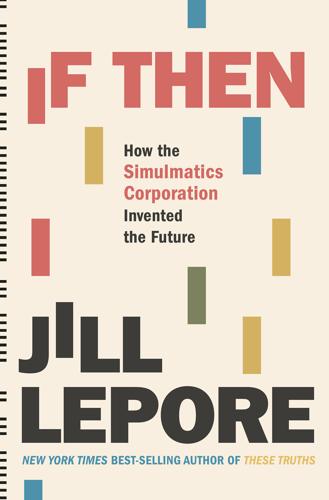
If Then: How Simulmatics Corporation Invented the Future
by
Jill Lepore
Published 14 Sep 2020
Etheredge (New Brunswick, NJ: Transaction Publishers, 2000), 301–16. Stewart Brand, The Media Lab: Inventing the Future at M.I.T. (New York: Viking, 1987), 18, 44, 214–19, 253, 267. Ibid., 33. Ibid., 183–84, 222–32. Stewart Brand, “We Owe It All to the Hippies,” Time, March 1, 1995. Esther Dyson, George Gilder, George Keyworth, and Alvin Toffler, Cyberspace and the American Dream: A Magna Carta for the Knowledge Age (Progress and Freedom Foundation, 1994). John Perry Barlow, “A Declaration of the Independence of Cyberspace,” February 8, 1996. IP, Questionnaire, undated, Pool Papers, Box 59, Folder “Contact Nets Diary.”
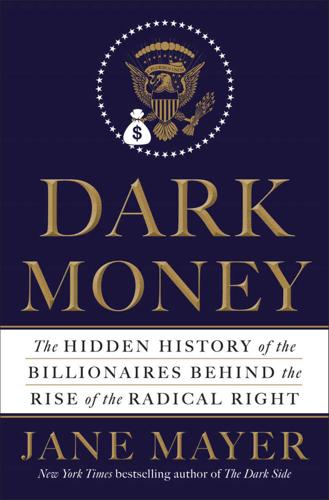
Dark Money: The Hidden History of the Billionaires Behind the Rise of the Radical Right
by
Jane Mayer
Published 19 Jan 2016
Fisher would go on to found another 150 or so free-market think tanks around the world, including the Manhattan Institute in New York, to which both Scaife and other conservative philanthropists would become major contributors. The Sarah Scaife Foundation in fact for many years was the Manhattan Institute’s single largest contributor. The donations paid off, from Scaife’s viewpoint, when they helped launch the careers of the conservative social critic Murray and the supply-side economics guru George Gilder, whose arguments against welfare programs and taxes had huge impacts on ordinary Americans. Fisher’s early collaborator in founding the Manhattan Institute was William Casey, the Wall Street financier and future director of the CIA. The early think tank was not a spy operation, but it was funded by wealthy men who had no objections to using pretexts and disinformation in the service of what they regarded as a noble cause.
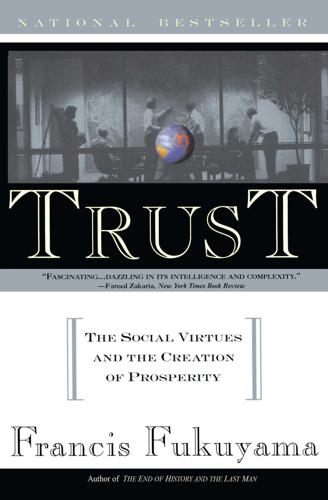
Trust: The Social Virtue and the Creation of Prosperity
by
Francis Fukuyama
Published 1 Jan 1995
As the story goes, information is power, and those at the top of traditional hierarchies maintained their dominance by controlling access to information. Modern communications technologies—telephones, fax machines, copiers, cassettes, VCRs, and the centrally important networked personal computer—have broken this stranglehold on information. The result, according to information age gurus from Alvin and Heidi Toffler and George Gilder to Vice President Al Gore and House Speaker Newt Gingrich, will be a devolution of power downward to the people and a liberation of everyone from the constraints of the centralized, tyrannical organizations in which they once worked.1 Information technology has indeed contributed to many of the decentralizing and democratizing tendencies of the past generation.

The Aristocracy of Talent: How Meritocracy Made the Modern World
by
Adrian Wooldridge
Published 2 Jun 2021
Rowe, China’s Last Empire: The Great Qing (Cambridge, Mass., Belknap Press of Harvard University Press, 2009), p. 45 6 Laven, Mission to China, pp. 132–3 7 Rowe, China’s Last Empire, p. 47 8 Hankins, Virtue Politics, pp. 498–9 9 Michael Schuman, Confucius and the World He Created (New York, Basic Books, 2015), p. xiv 10 Mark Edward Lewis, China’s Cosmopolitan Empire: The Tang Dynasty (Cambridge, Mass., Belknap Press of Harvard University Press, 2009), pp. 202–3 11 Ibid., p. 204 12 Ibid., pp. 101–4 13 The ever-assiduous Têng Ssü-yu lists these in his ‘Chinese Influence on the Western Examination System’, Harvard Journal of Asiatic Studies, 7 (4) (Sept. 1943), pp. 308–12 14 Ibid., p. 279 15 Ibid., p. 281 16 Robertson, The Enlightenment, p. 624 17 Têng, ‘Chinese Influence on the Western Examination System’, p. 288 18 Ibid., p. 299 19 Robertson, The Enlightenment, p. 625 20 E. Backhouse and J. O. P. Bland, Annals and Memoirs of the Court of Peking (Boston, Houghton Mifflin, 1914), p. 322 6. THE CHOSEN PEOPLE 1 George Gilder, The Israel Test (New York, Richard Vigilante Books, 2009), p. 33 2 David Brooks, ‘The Tel Aviv Cluster’, The New York Times, 12 January 2010 3 Yuri Slezkine, The Jewish Century (Princeton, Princeton University Press, 2004), p. 225 4 Ibid., p. 52 5 Ibid., p. 53 6 Thorstein Veblen, ‘The Intellectual Pre-eminence of Jews in Modern Europe’, Political Science Quarterly 34 (1) (March 1919), p. 39 7 Hans Eysenck, Know Your Own IQ (London, Penguin, 1962) and Check Your Own IQ (London, Penguin, 1966); Nathan Glazer, Affirmative Discrimination: Ethnic Inequality and Public Policy (Cambridge, Mass., Harvard University Press, 1987) 8 Slezkine, The Jewish Century, p. 1 9 Paul Johnson, A History of the Jews (London, Weidenfeld Nicolson, 1987), p. 287 10 Ibid., p. 190 11 Norman Lebrecht, Genius and Anxiety: How Jews Changed the World 1847–1947 (London, Oneworld, 2019), p. 186 12 Werner Sombart, The Jews and Modern Capitalism (London, T.
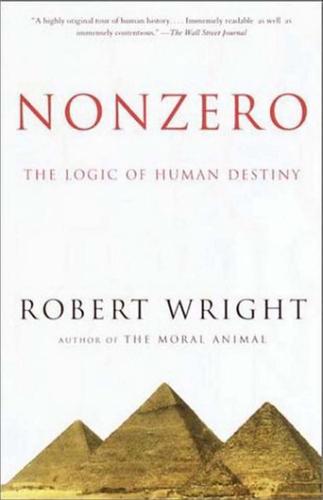
The Moral Animal: Evolutionary Psychology and Everyday Life
by
Robert Wright
Published 1 Jan 1994
Ever since boats were paddled and trails were blazed, distance has become less and less an obstacle to contact. As transportation and communication get smoother and cheaper, long-distance trade and collaboration make more sense. Not-so-new feature #2: The “Ideas” Economy. According to the futurist George Gilder, the second half of the twentieth century saw the dawning of the “microcosmic” era, which brought “the ascendancy of information and mind in contemporary technology, and hence in economics as well.” Thus, the value of computer hardware “resides in the ideas rather than in their material embodiment.”
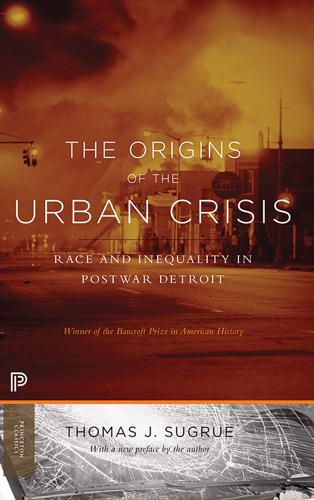
The Origins of the Urban Crisis
by
Sugrue, Thomas J.
Banfield, The Unheavenly City: The Nature and Future of Our Urban Crisis (Boston: Little, Brown, 1968); E. Franklin Frazier, The Negro Family in the United States (Chicago: University of Chicago Press, 1939); Lee Rainwater and William L. Yancey, eds., The Moynihan Report and the Politics of Controversy (Cambridge, Mass.: MIT Press, 1967). More recent works include George Gilder, Wealth and Poverty (New York: Basic Books, 1981); Charles Murray, Losing Ground: American Social Policy, 1950–1980 (New York: Basic Books, 1984); Myron Magnet, The Nightmare and the Dream: The Sixties Legacy to the Underclass (New York: William Morrow, 1993); Lawrence Mead, The New Politics of Poverty (New York: Basic Books, 1992).
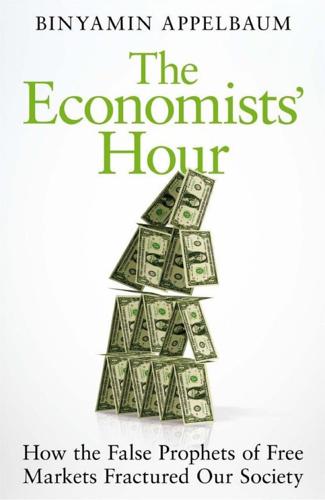
The Economists' Hour: How the False Prophets of Free Markets Fractured Our Society
by
Binyamin Appelbaum
Published 4 Sep 2019
Rodgers notes that Reagan “was fond of saying that his political opponents saw people only as members of groups; his party, to the contrary, saw the people of America as individuals.” This was evident in his rhetoric. “In Reagan’s very celebrations of the people, the plural noun tended to slip away, to skitter toward the singular.” It was an emphasis shared by many of the great rhetoricians of the free-market movement. “[George] Gilder’s heroically independent entrepreneurs, [Robert] Lucas’s forward-looking utility maximizers, [Jude] Wanniski’s fish and coconut traders, the Coase theorem’s rancher and farmer maximizing the public good as they stood on the courthouse steps. To imagine the market now was to imagine a socially detached array of economic actors, free to choose.”
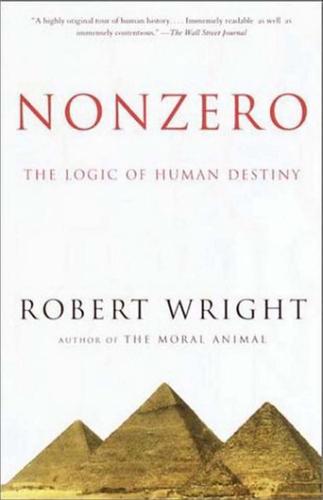
Nonzero: The Logic of Human Destiny
by
Robert Wright
Published 28 Dec 2010
Ever since boats were paddled and trails were blazed, distance has become less and less an obstacle to contact. As transportation and communication get smoother and cheaper, long-distance trade and collaboration make more sense. Not-so-new feature #2: The “Ideas” Economy. According to the futurist George Gilder, the second half of the twentieth century saw the dawning of the “microcosmic” era, which brought “the ascendancy of information and mind in contemporary technology, and hence in economics as well.” Thus, the value of computer hardware “resides in the ideas rather than in their material embodiment.”

Aerotropolis
by
John D. Kasarda
and
Greg Lindsay
Published 2 Jan 2009
In every case, as the friction posed by space has decreased, cities have become less dense and contiguous and grown more dispersed, networked, and fluid. In the Net Age, this fluidity promised (or threatened) to become extreme—in theory, those of us who make our living with computers could live anywhere. No one has preached this vision more fervently than the technologist George Gilder, whose utopia of the “telecosm” and infinite bandwidth has us scattering back into the countryside to live like Jeffersonian gentlemen-farmers, with Facebook serving as the village green. But total dispersion hasn’t come to pass, and it won’t, no matter how much bandwidth we’re able to route through our iPhones.

Slouching Towards Utopia: An Economic History of the Twentieth Century
by
J. Bradford Delong
Published 6 Apr 2020
Dan Ziblatt, Conservative Parties and the Birth of Democracy, Cambridge: Cambridge University Press, 2017. 16. Edmund S. Morgan, American Slavery, American Freedom: The Ordeal of Colonial Virginia, New York: W. W. Norton, 1975. 17. Charles Murray, Losing Ground: American Social Policy, 1950–1980, New York: Basic Books, 1984. 18. George Gilder, Wealth and Poverty, New York: ICS Press, 1981. 19. Daniel Patrick Moynihan, The Negro Family: The Case for National Action, Office of Policy Planning and Research, US Department of Labor, March 1965, full text at US Department of Labor, www.dol.gov/general/aboutdol/history/webid-moynihan. 20.
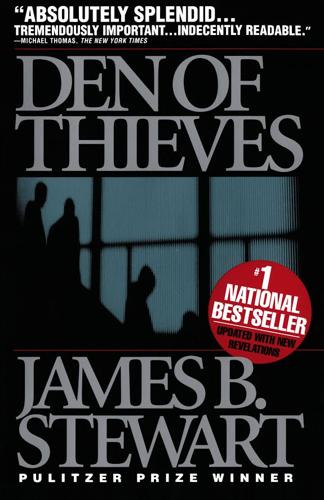
Den of Thieves
by
James B. Stewart
Published 14 Oct 1991
Prosecutors are despairing that any further cooperation from Milken will prove of substantial value to law enforcement. Much of Milken's time apparently is spent pondering how to influence history's verdict. Lorraine Spurge is now president of an organization, "Working for the American Dream," whose purpose is to burnish Milken's image. Board members include Milken apologists George Gilder, the economist; Peter Magowan, chairman of Safeway; and Jude Wanniski, a commentator. The book about Milken's clients that so troubled Robinson, Lake's employees was finally published in June 1991 as Portraits of the American Dream. Spurge and her organization have written letters seeking financial contributions to the Milken cause.

The Code: Silicon Valley and the Remaking of America
by
Margaret O'Mara
Published 8 Jul 2019
Taking the lead was Esther Dyson, whose annual PC Forum and monthly newsletter Release 1.0 had become the way the most powerful people in tech learned about the future. Then came “Doctor SDI,” George (Jay) Keyworth, who as Reagan’s science advisor had been one of the High Frontier’s most bullish defenders. Another Reagan-era boldface name on the roster was former presidential speechwriter George Gilder, evangelist of the supply-side gospel and a pop-science gadfly whose musings about the dangers of feminism once prompted NOW to dub him “male chauvinist of the year.” Now Gilder had turned techno-futurist in the mold of Alvin Toffler, the essay’s fourth author, who supplied grandiose textural flourishes.
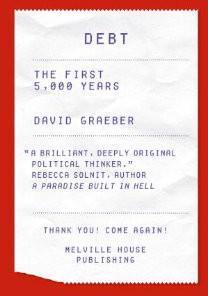
Debt: The First 5,000 Years
by
David Graeber
Published 1 Jan 2010
It is no coincidence that the new phase of American debt imperialism has also been accompanied by the rise of the evangelical right, who—in defiance of almost all previously existing Christian theology—have enthusiastically embraced the doctrine of “supply-side economics,” that creating money and effectively giving it to the rich is the most Biblically appropriate way to bring about national prosperity. Perhaps the most ambitious theologian of the new creed was George Gilder, whose book Wealth and Poverty became a best-seller in 1981, at the very dawn of what came to be known as the Reagan Revolution. Gilder’s argument was that those who felt that money could not simply be created were mired in an old-fashioned, godless materialism that did not realize that just as God could create something out of nothing, His greatest gift to humanity was creativity itself, which proceeded in exactly the same way.

Wired for War: The Robotics Revolution and Conflict in the 21st Century
by
P. W. Singer
Published 1 Jan 2010
paper presented at the Military Robotics Conference, Institute for Defense and Government Advancement, Washington, DC, April 10-12, 2006. 415 “the robots will eventually succeed us” Andrew Smith, “Science 2001: Net Prophets,” Observer, December 31, 2000, 19. 415 “our machines are evolving faster” K. Eric Drexler, Engines of Creation, 1st ed. (Garden City, NY: Anchor Press/Doubleday, 1986), 171. 415 “humanity looks to me” Smith, “Science 2001: Net Prophets,” 18. 415 “In the game of life and evolution” George Gilder and Richard Vigilante, “Stop Everything . . . It’s Techno-Horror!,” American Spectator 34, no. 2 (2001): 40. 415 “a 50 percent chance of survival” Smith, “Science 2001: Net Prophets,” 18. 415 “leapingly, screamingly insane” Joel Garreau, Radical Evolution: The Promise and Peril of Enhancing Our Minds, Our Bodies—And What It Means to Be Human (New York: Doubleday, 2005), 73. 415 “Well, yeah, but I’ve decided” Smith, “Science 2001: Net Prophets,” 18. 416 “In designing software and microprocessors” Bill Joy, “Why the Future Doesn’t Need Us,” in Taking the Red Pill: Science, Philosophy and Religion in The Matrix, ed.

Coders at Work
by
Peter Seibel
Published 22 Jun 2009
And that's still out there. I think it may have made its way into Linux. I was at SGI from '85 to '92. In '92 somebody I knew at SGI had gone to MicroUnity and I was tired of SGI bloating up and acquiring companies and being overrun with politicians. So I jumped and it was to MicroUnity, which George Gilder wrote about in the '90s in Forbes ASAP as if it was going to be the next big thing. Then down the memory hole; it turned into a $200 million crater in North Sunnyvale. It was a very good learning experience. I did some work on GCC there, so I got some compiler-language hacking. I did a little editor language for MPEG2 video where you could write this crufty pseudospec language like the ISO spec or the IEC spec, and actually generate test bit streams that have all the right syntax.
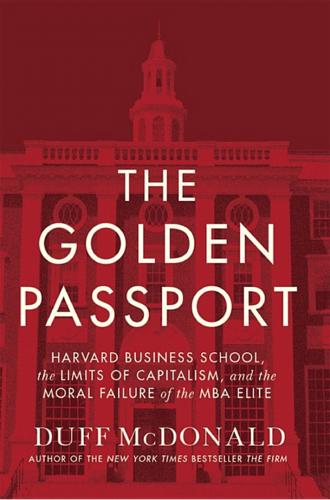
The Golden Passport: Harvard Business School, the Limits of Capitalism, and the Moral Failure of the MBA Elite
by
Duff McDonald
Published 24 Apr 2017
One HBS student described the experience of The Entrepreneurial Manager as “like hearing virgins talk about sex.”23 Successful technology entrepreneurs and venture capitalists, in particular, have made a sport of ridiculing the entrepreneurial aspirations of both business schools and MBAs alike. In his 1984 book, The Spirit of Enterprise, George Gilder took aim directly at HBS: “Business schools . . . tend to turn out cynical manipulators of existing values rather than entrepreneurial creators of value,” he wrote. “Leading professors at Harvard Business School, preoccupied by the calculable maximization of self-interest, show a pathetic incapacity to comprehend the essence of entrepreneurship.”24 To wit: A 1984 study revealed that nearly half of HBS alums considered themselves entrepreneurs . . . but that less than half of those “entrepreneurs” were self-employed.

Bourgeois Dignity: Why Economics Can't Explain the Modern World
by
Deirdre N. McCloskey
Published 15 Nov 2011
Let us start having improved but thus far bureaucracy-blocked up-to-date computers for air-traffic control. Joel Mokyr, again, who is among the handful of my academic colleagues in economic history favoring the ideational approach (along with the historian Margaret Jacob, the sociologist Jack Goldstone, and such groundbreaking nonacademics as Jane Jacobs, Michael Novak, George Gilder, and Matt Ridley), makes the same point in speaking of the turn to usefulness in what he calls the Industrial Enlightenment. Yet Mokyr would agree that usefulness, too, needs a trading test, and that sheer innovation without the test is worse than useless, novelty without betterment—backyard blast furnaces, say.
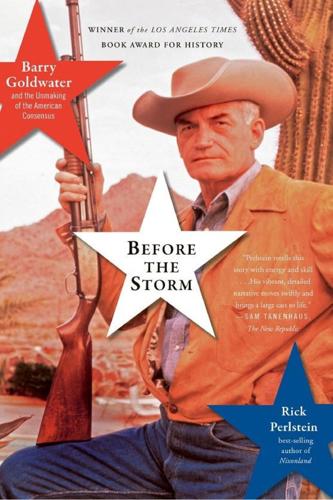
Before the Storm: Barry Goldwater and the Unmaking of the American Consensus
by
Rick Perlstein
Published 17 Mar 2009
Again and again he returned to Washington to get his hands on the card files of Nixon delegates to the 1960 convention. He failed, with ever greater frustration, every time. In June he attended an RNC meeting in Seattle. So did a gang of Harvard kids, led by Bruce Chapman, a member of the team that had drafted the Compact of Fifth Avenue in 1960, and George Gilder, David Rockefeller’s godson, who put out a new magazine called Advance—“flaming moderates,” they called themselves. Chapman and Gilder had recently drummed up a movement that once again almost got Goldwater dumped as chairman of the Republican Senatorial Campaign Committee. Advance was all anyone talked about all weekend.